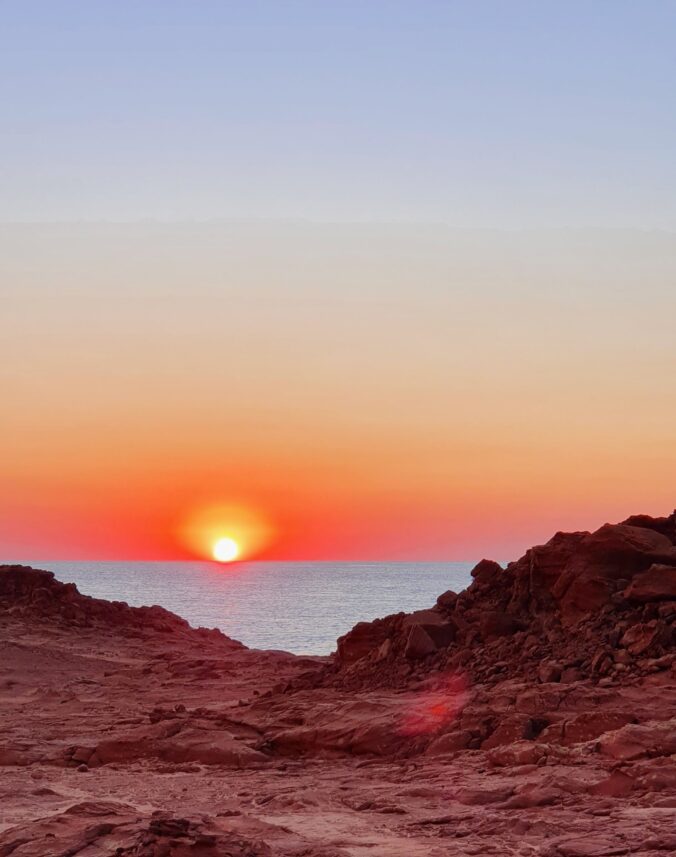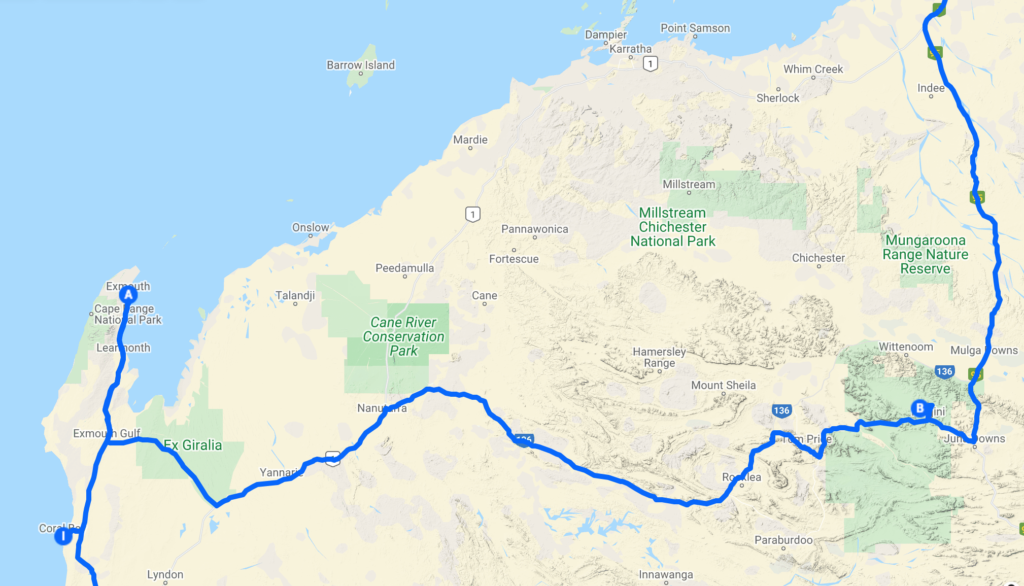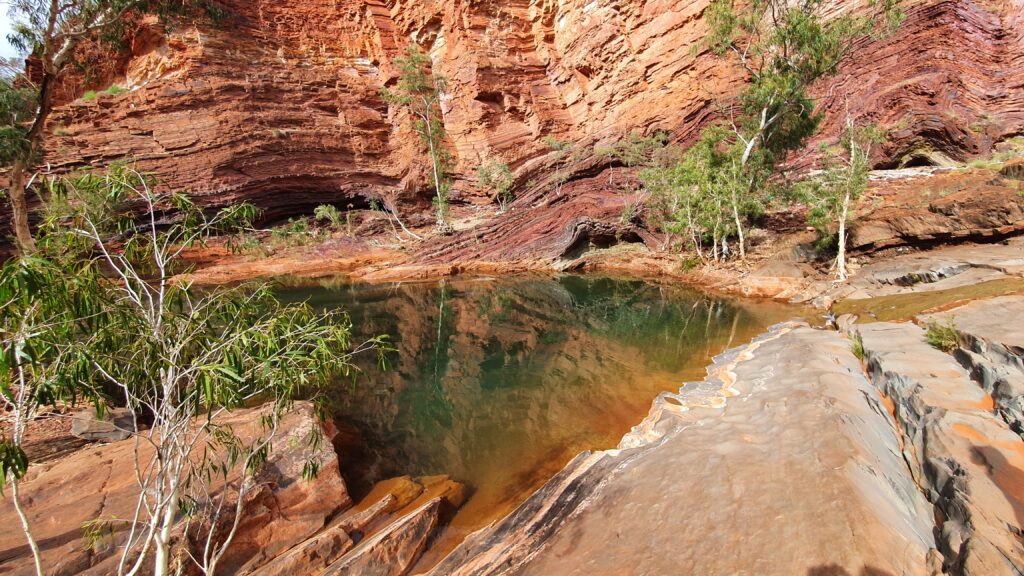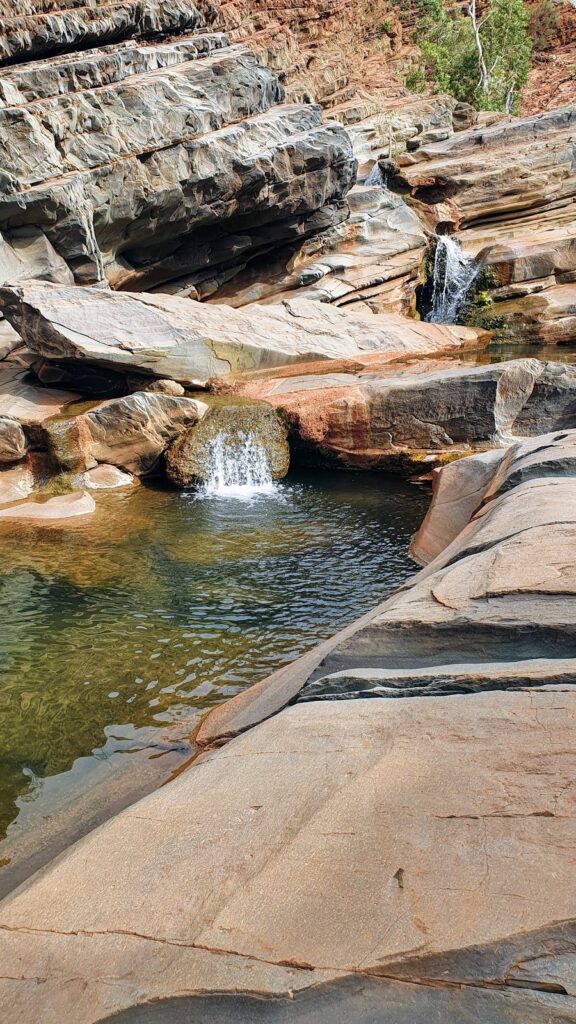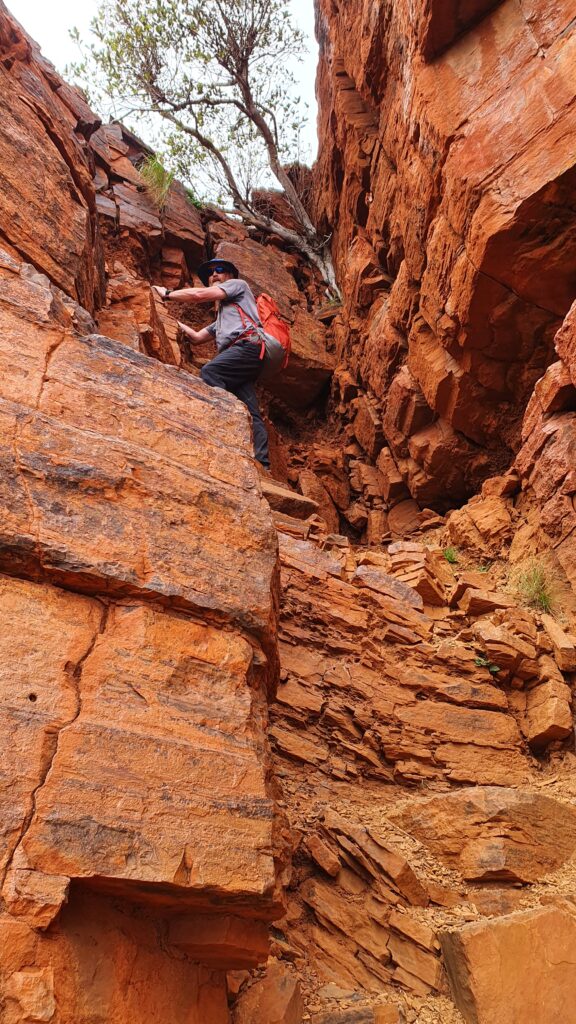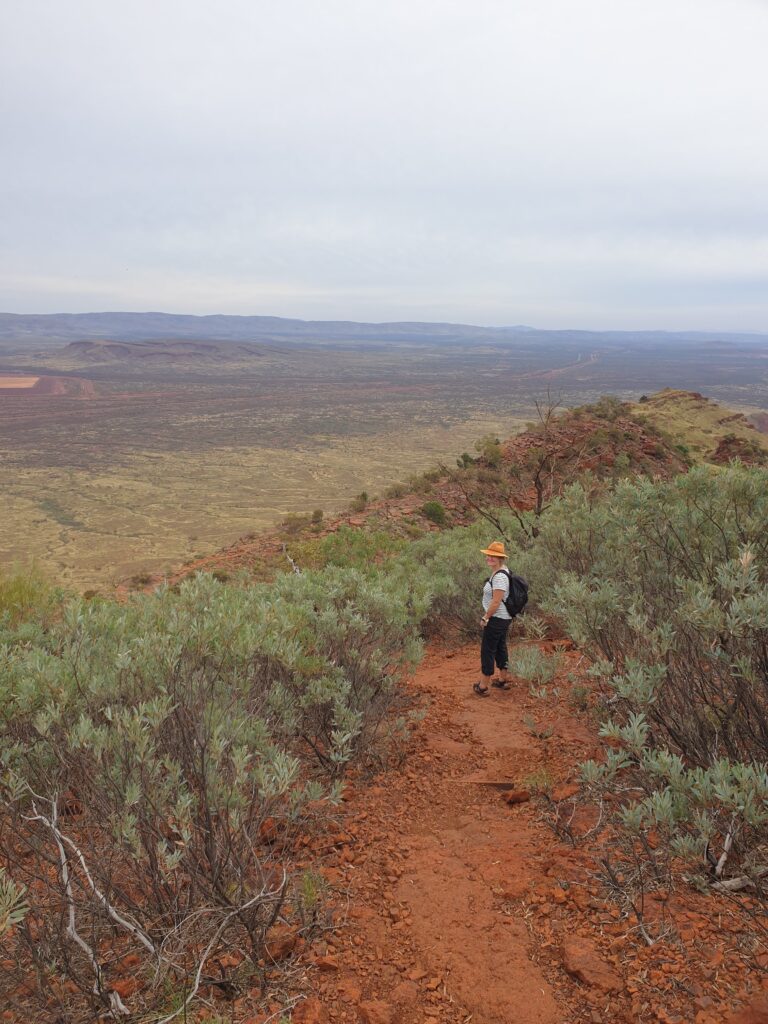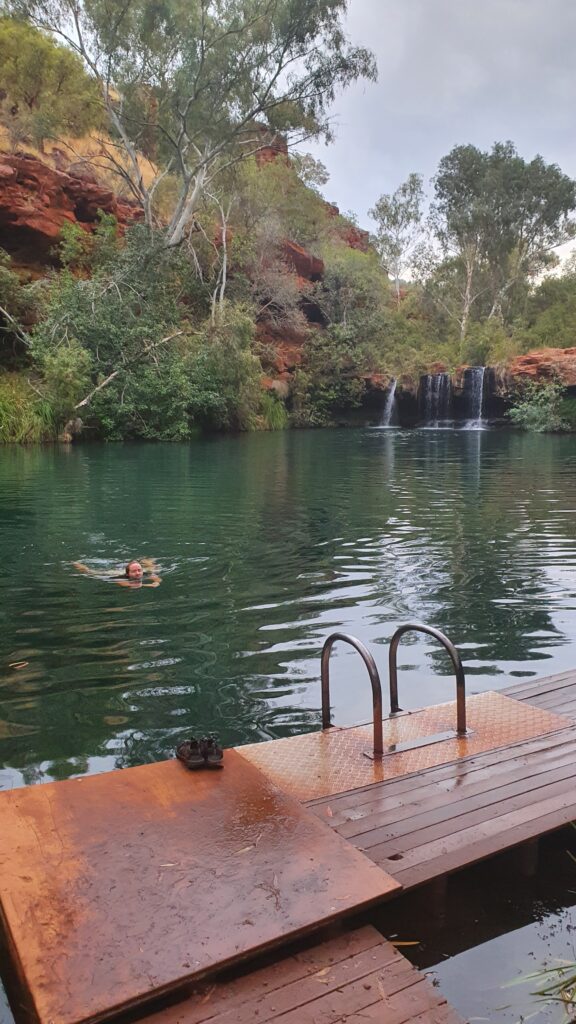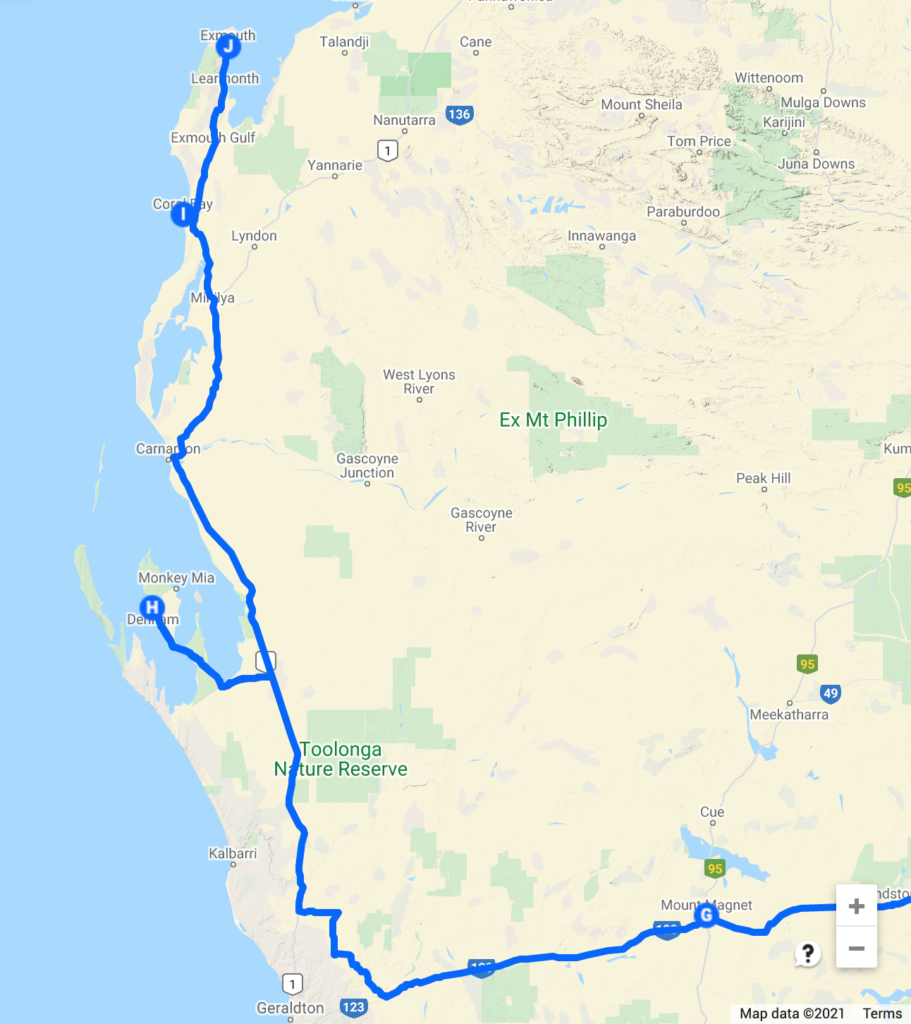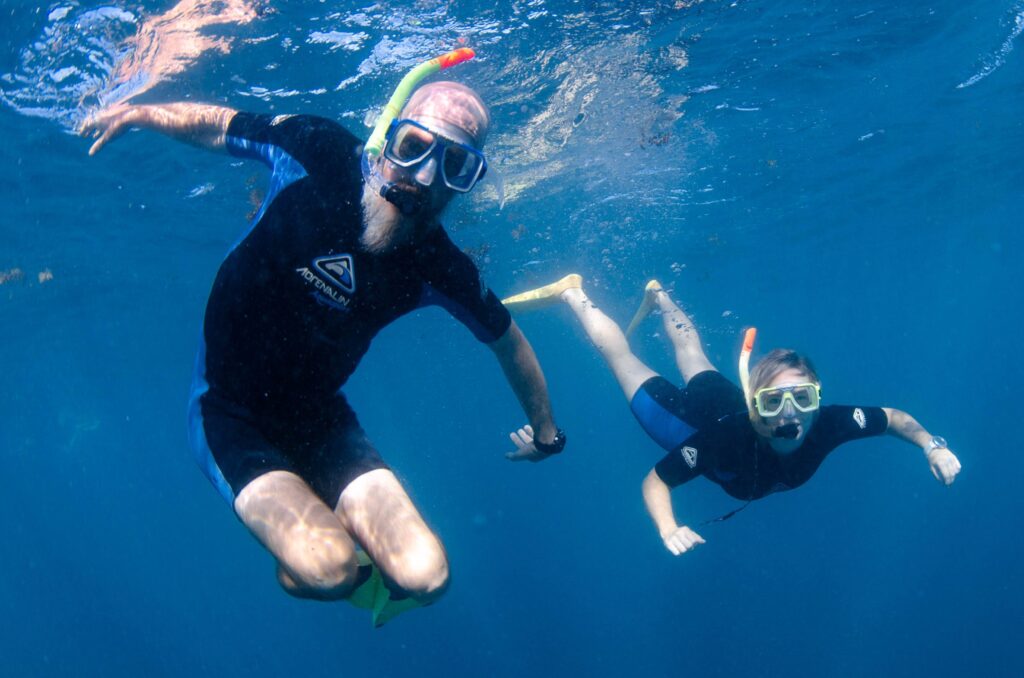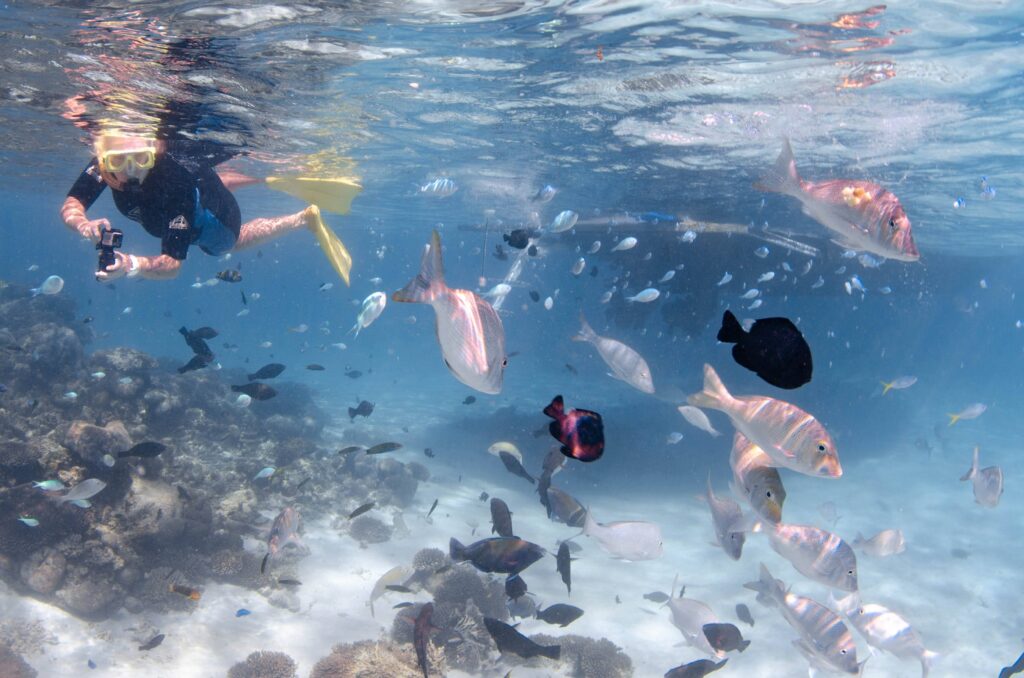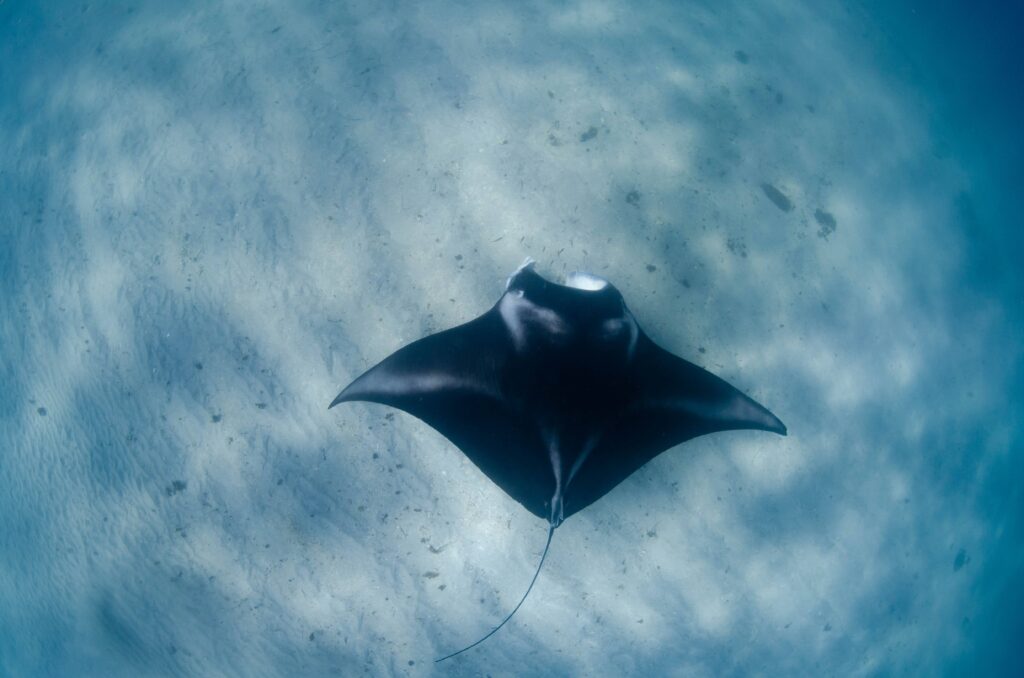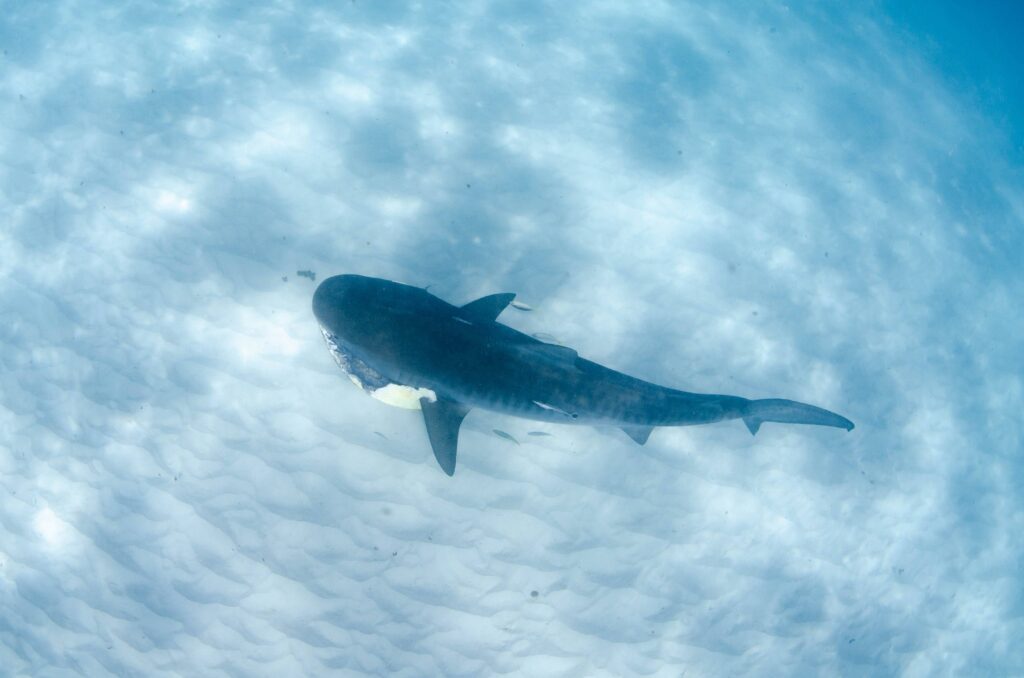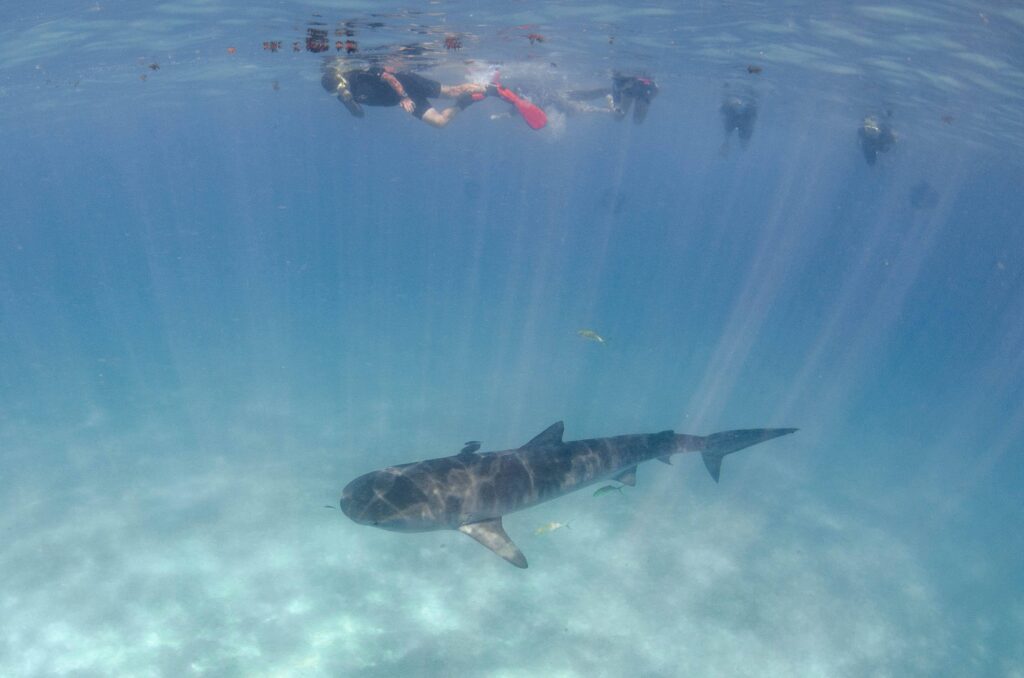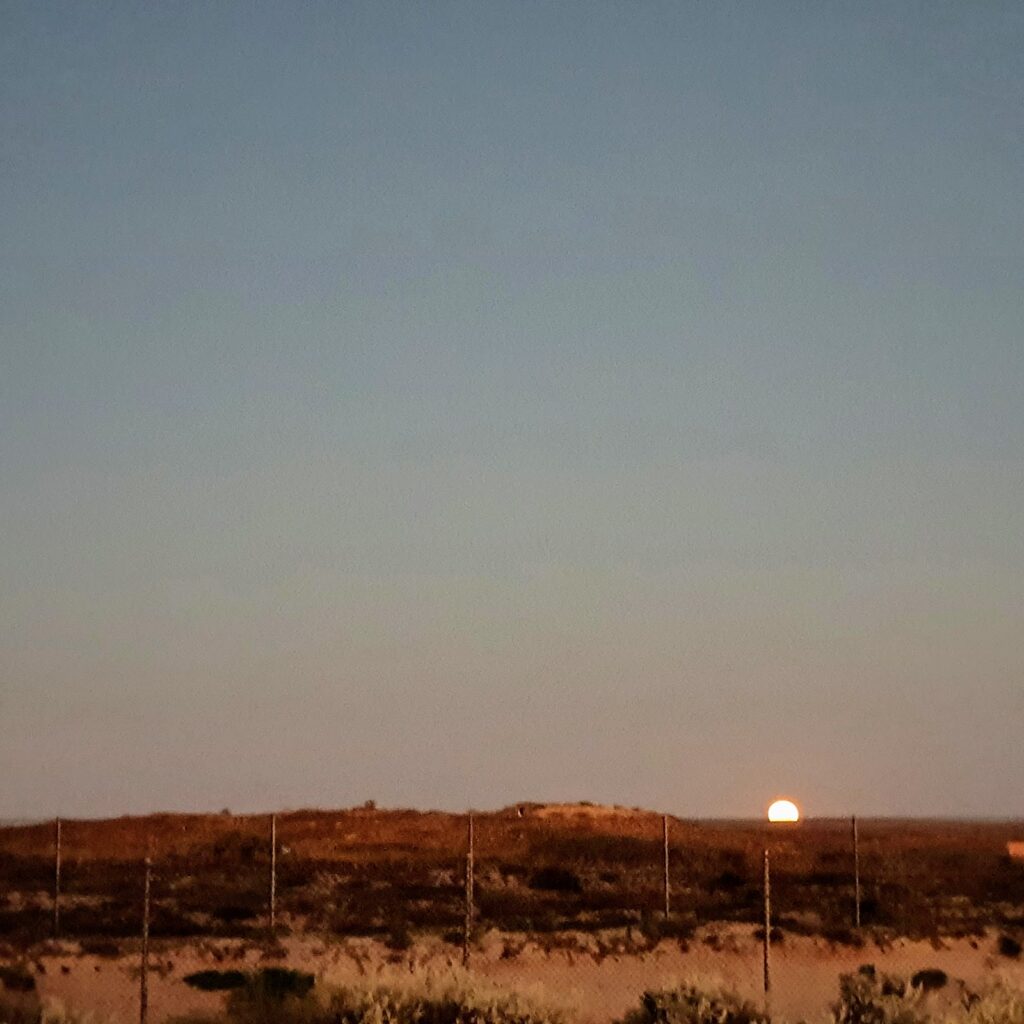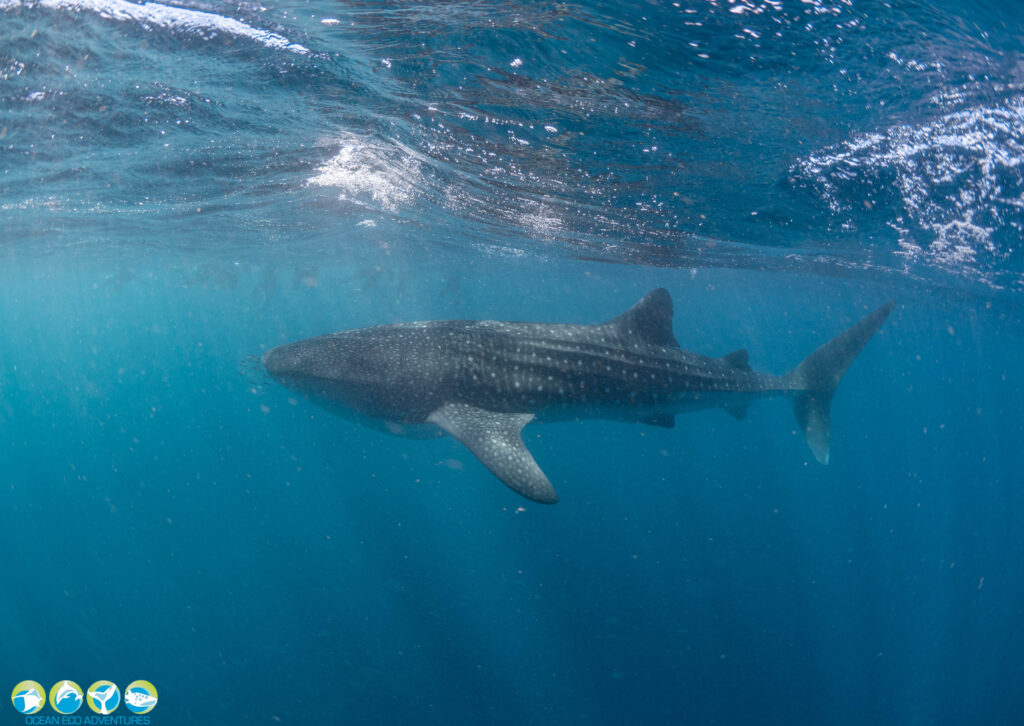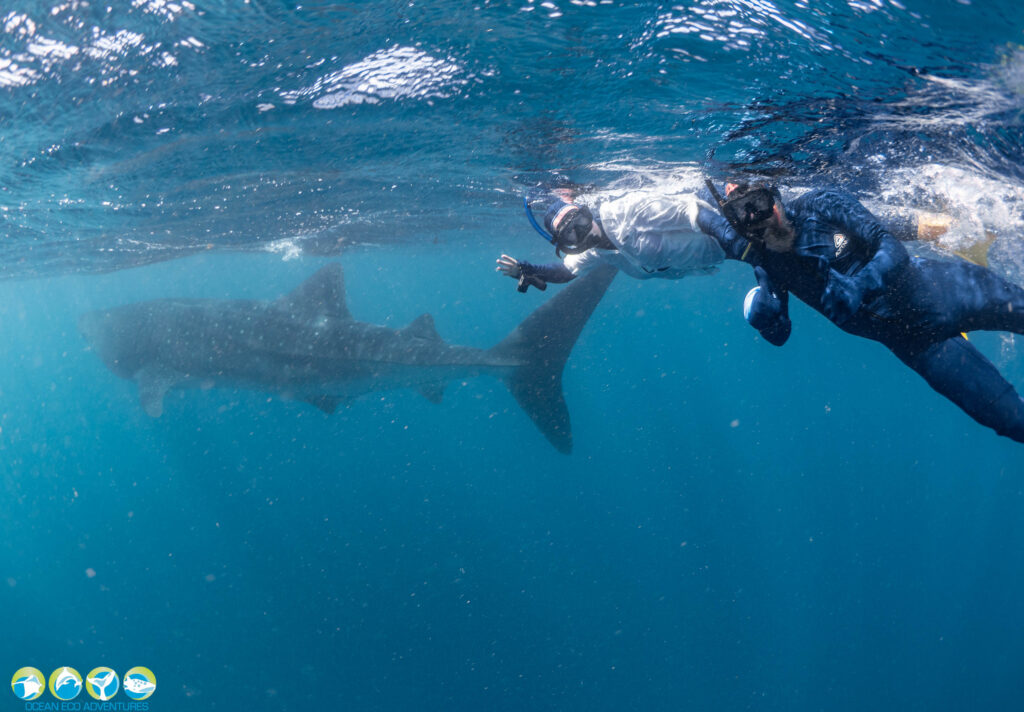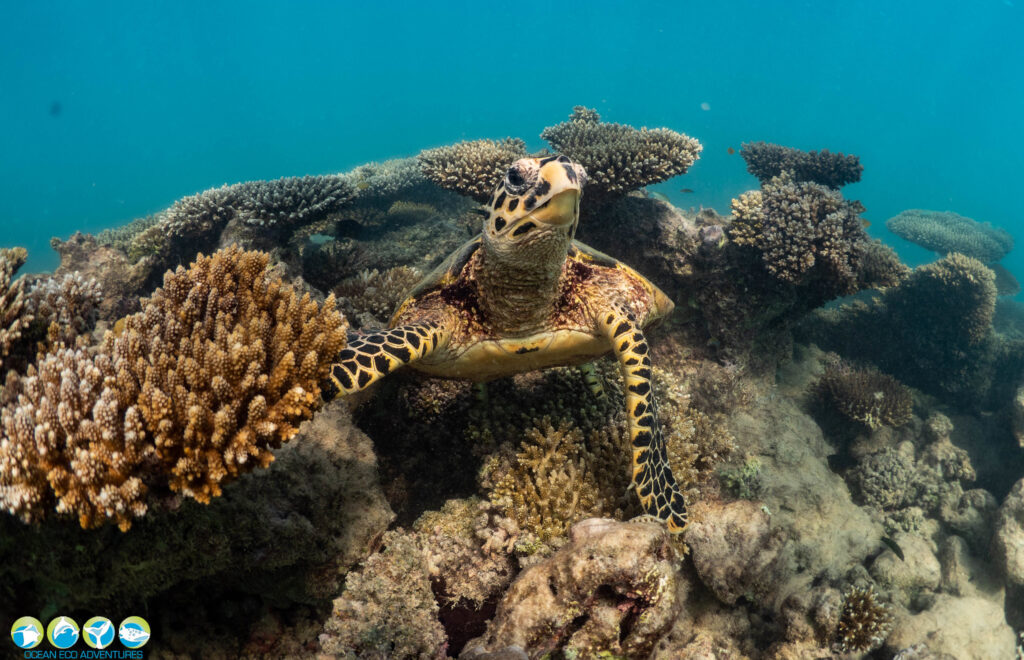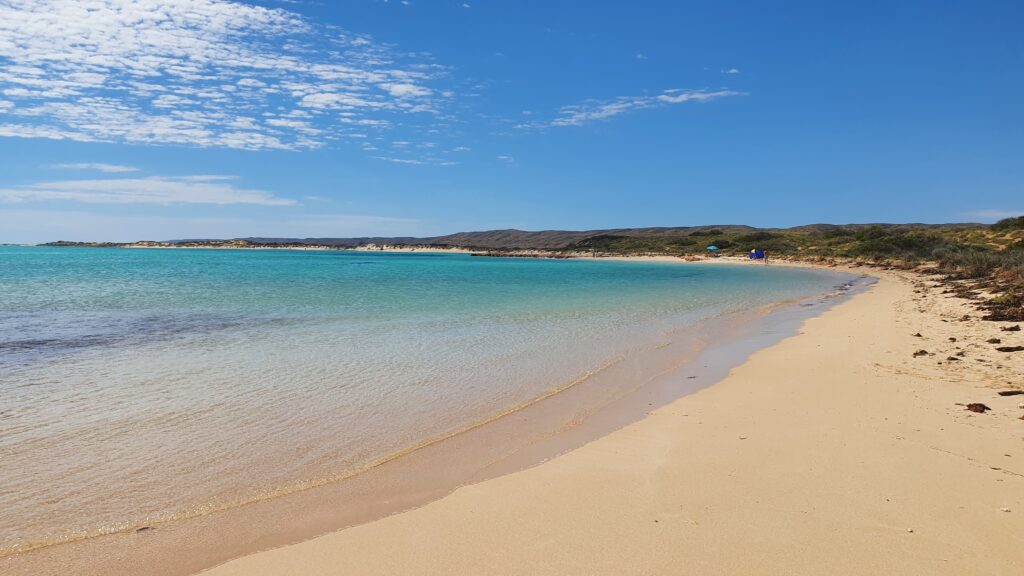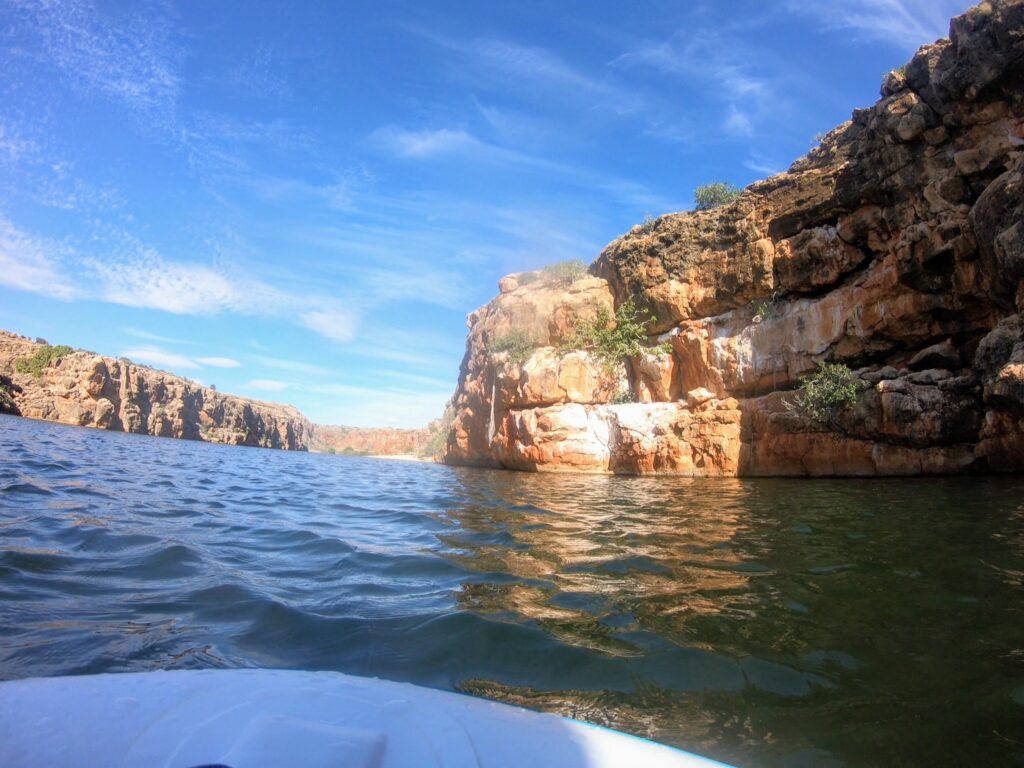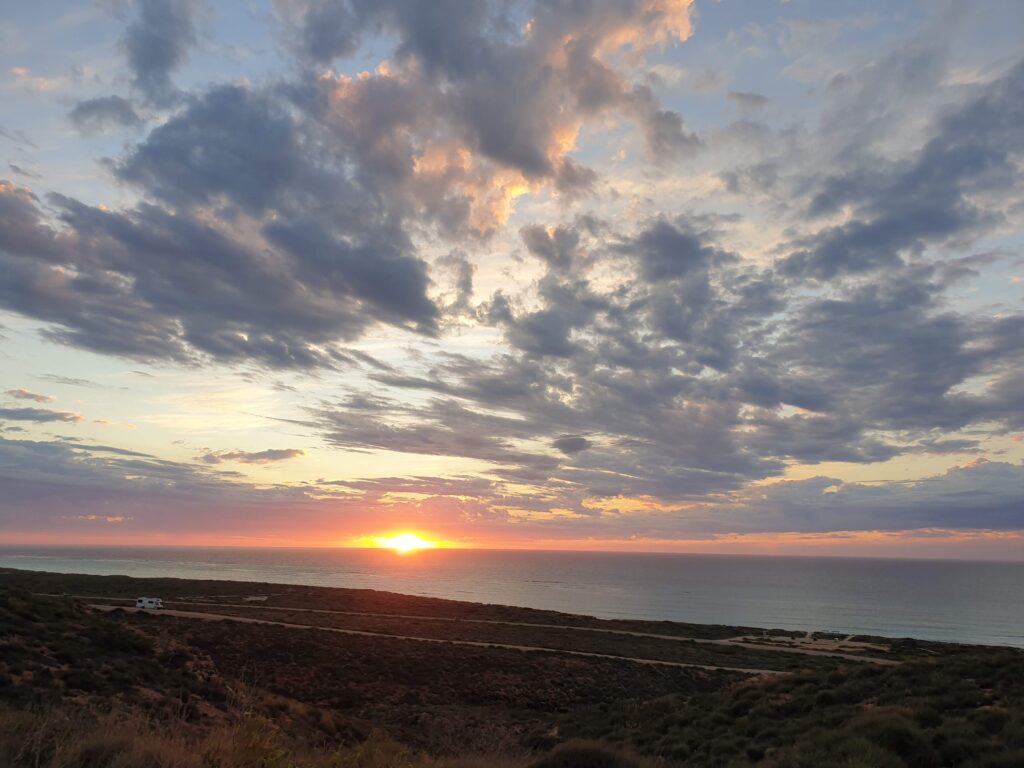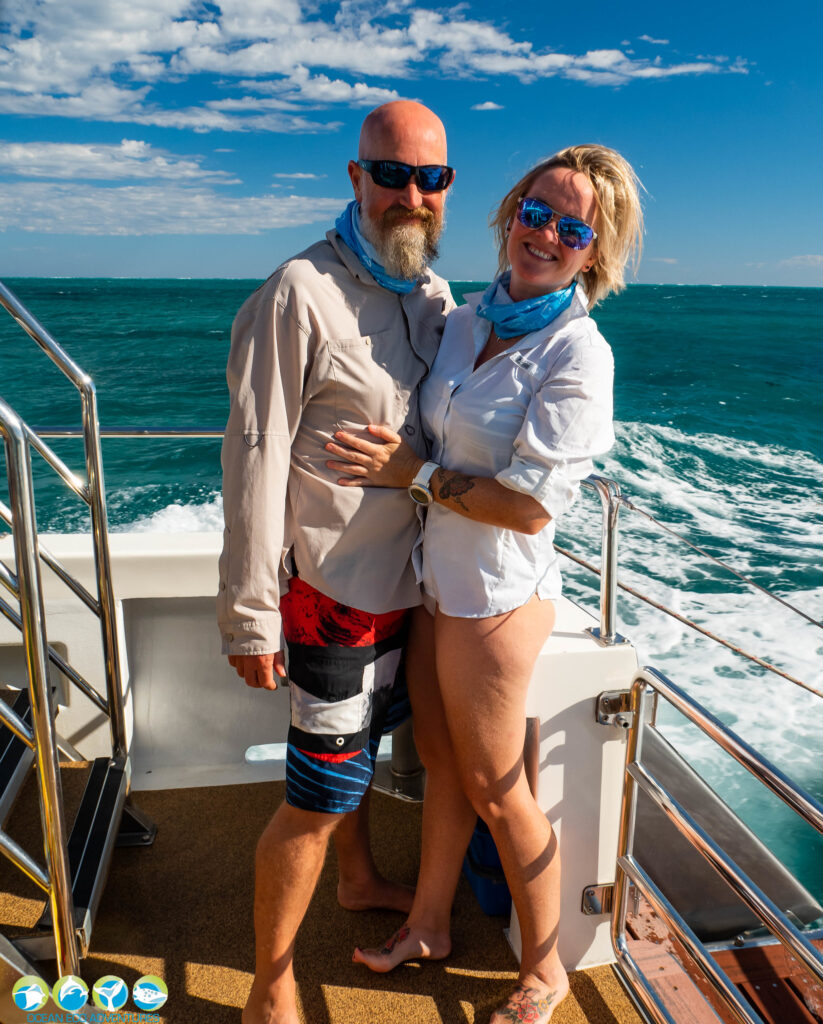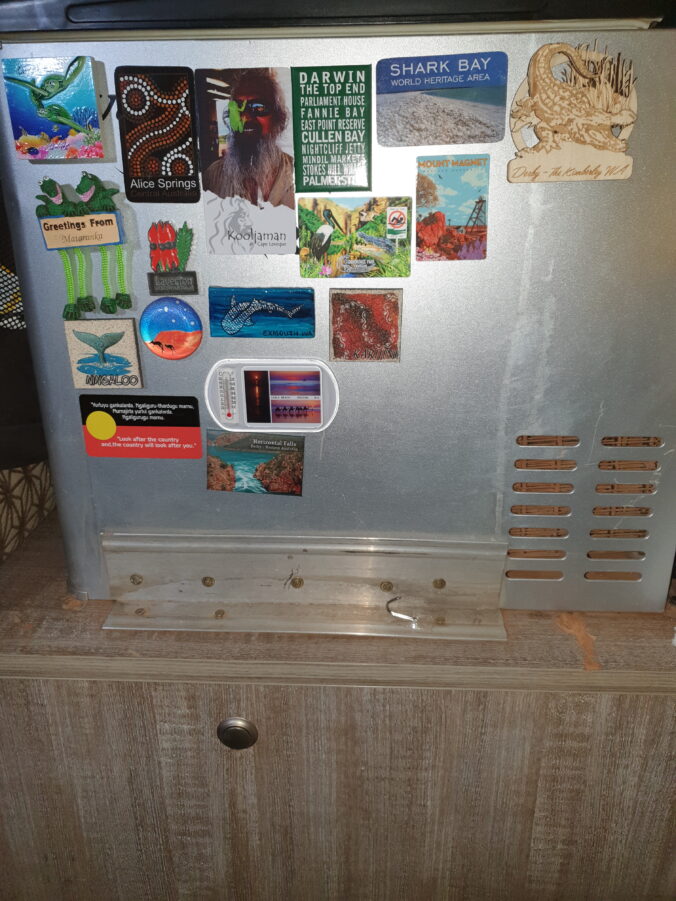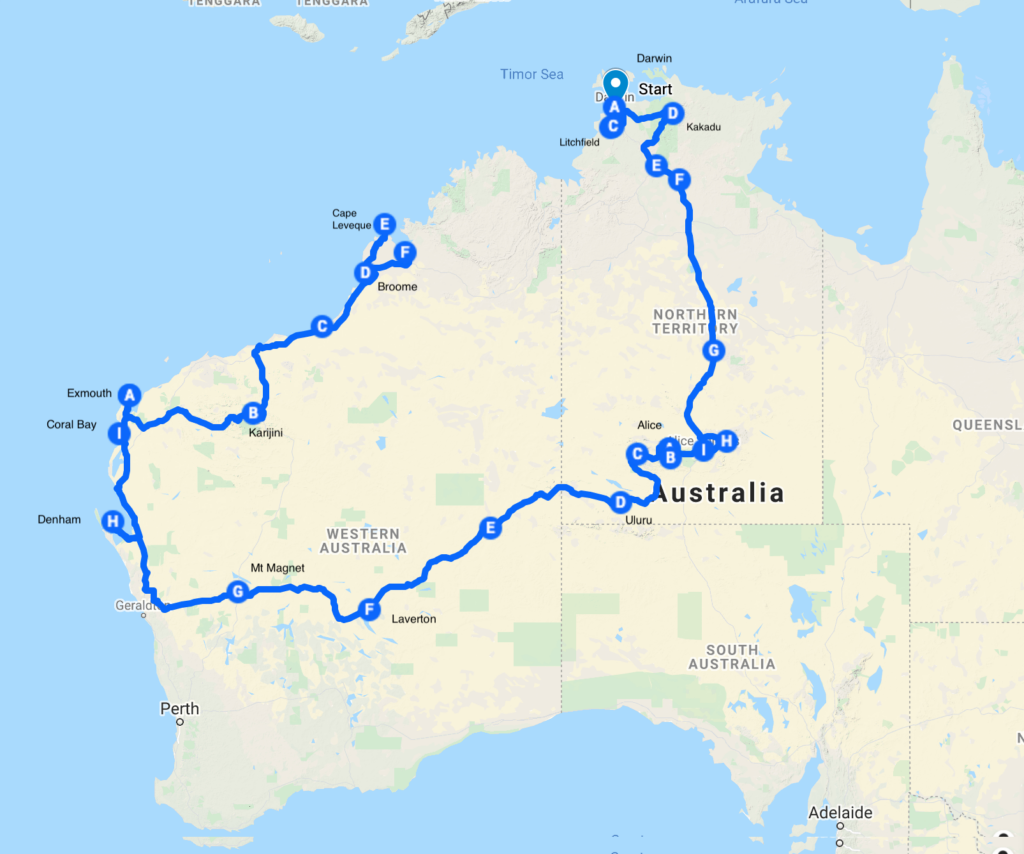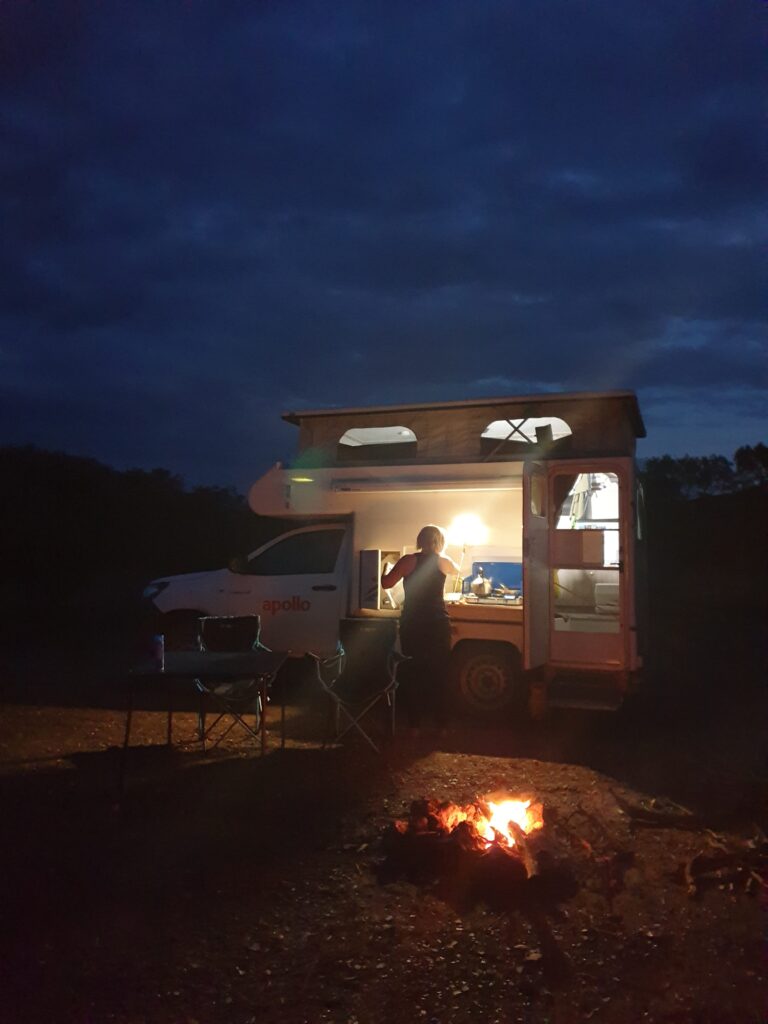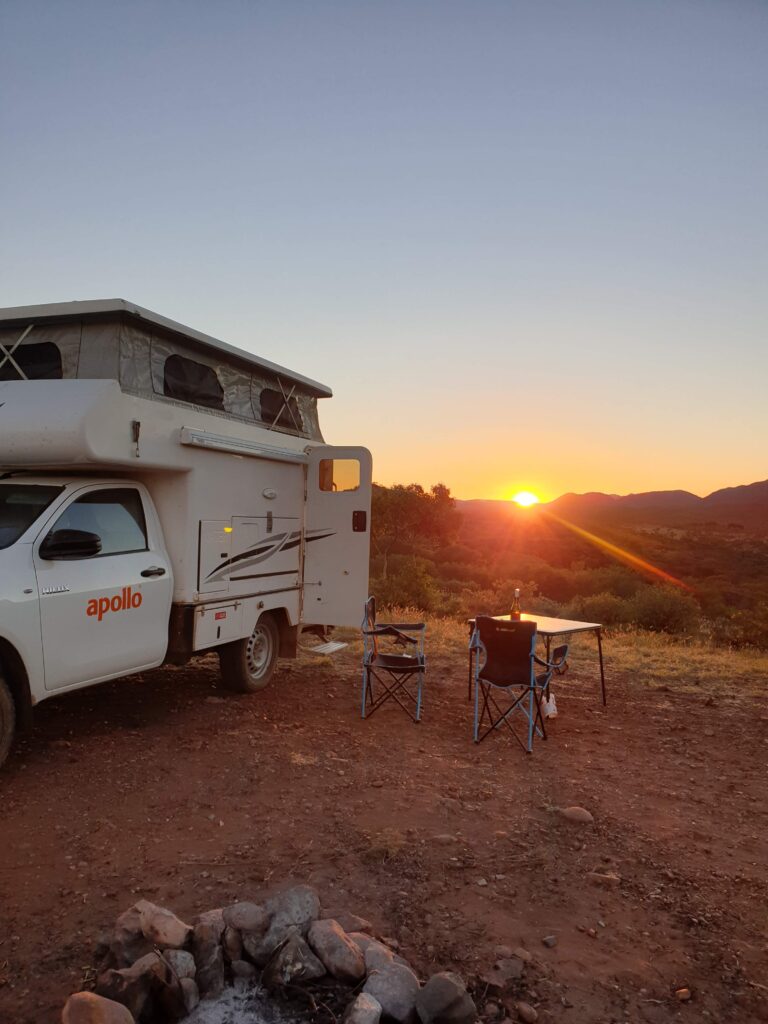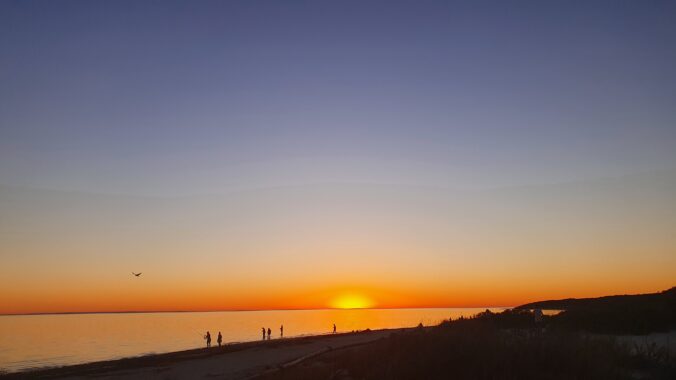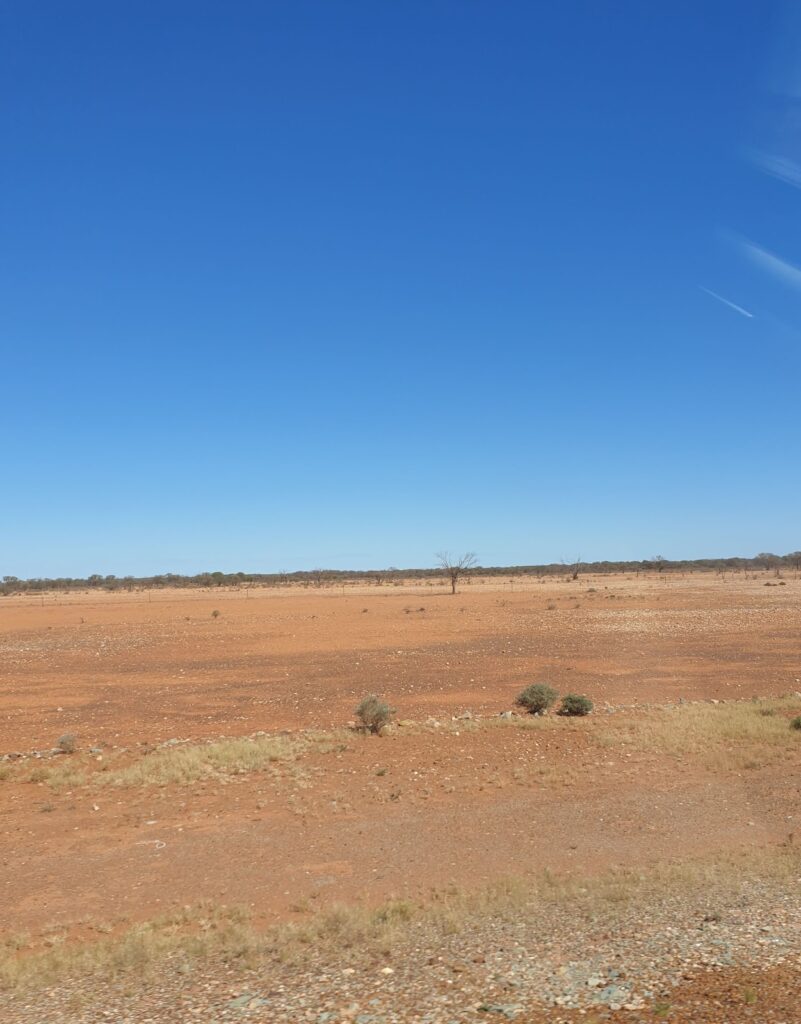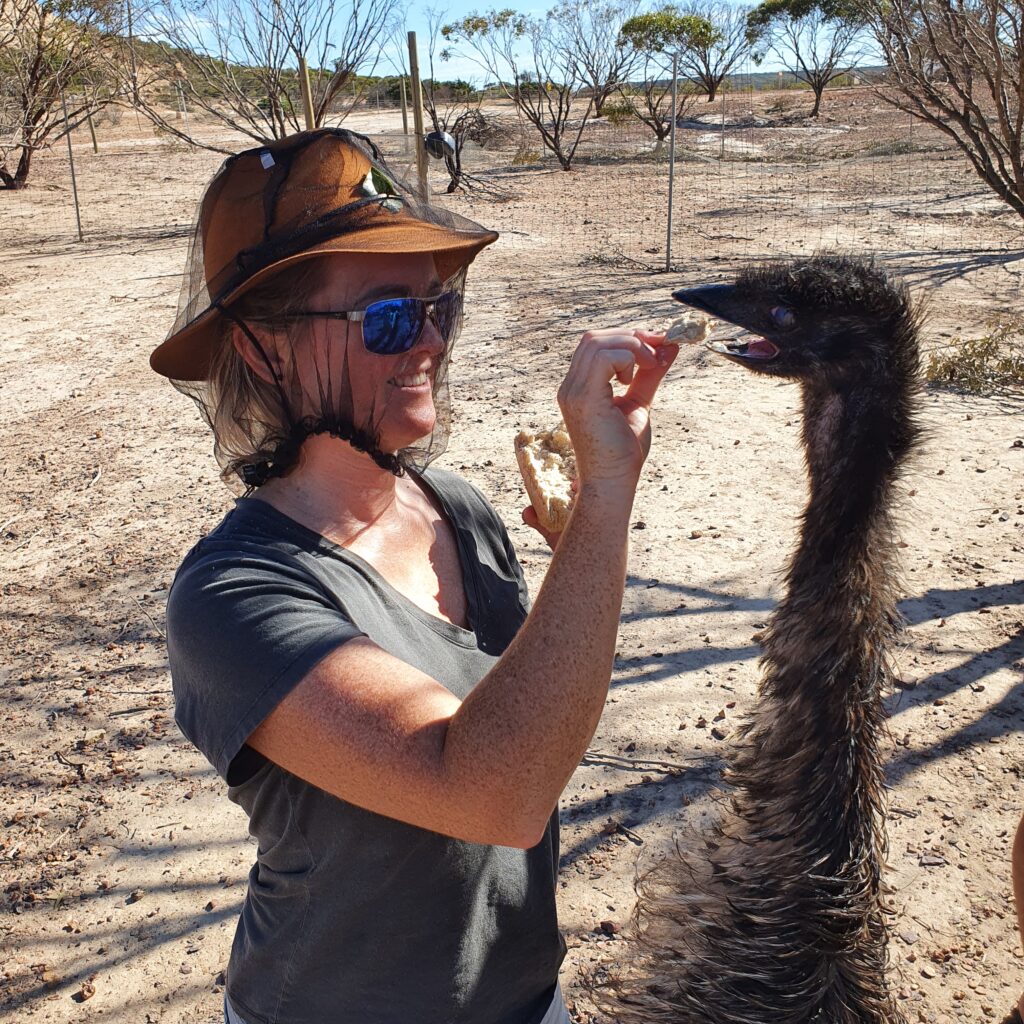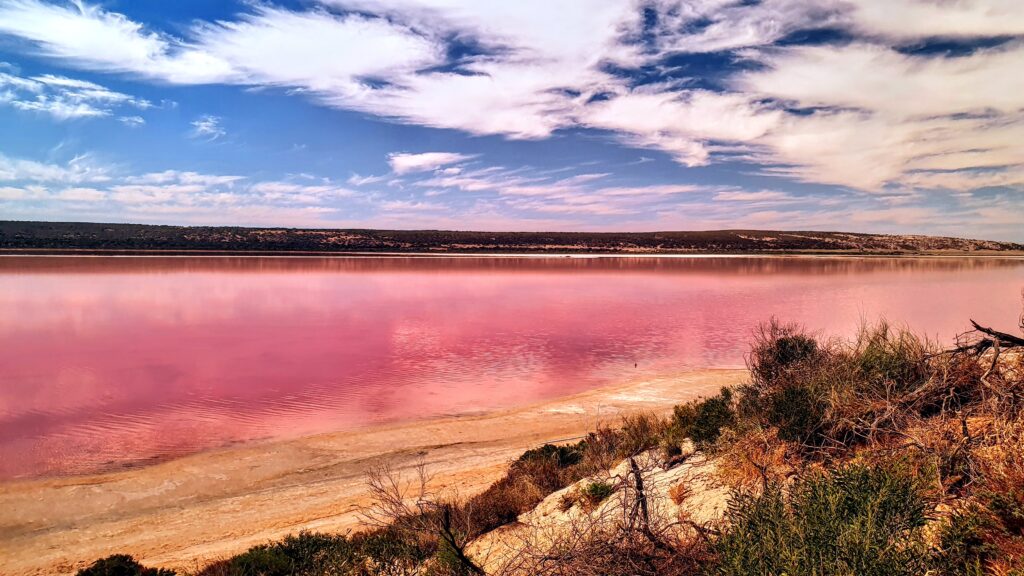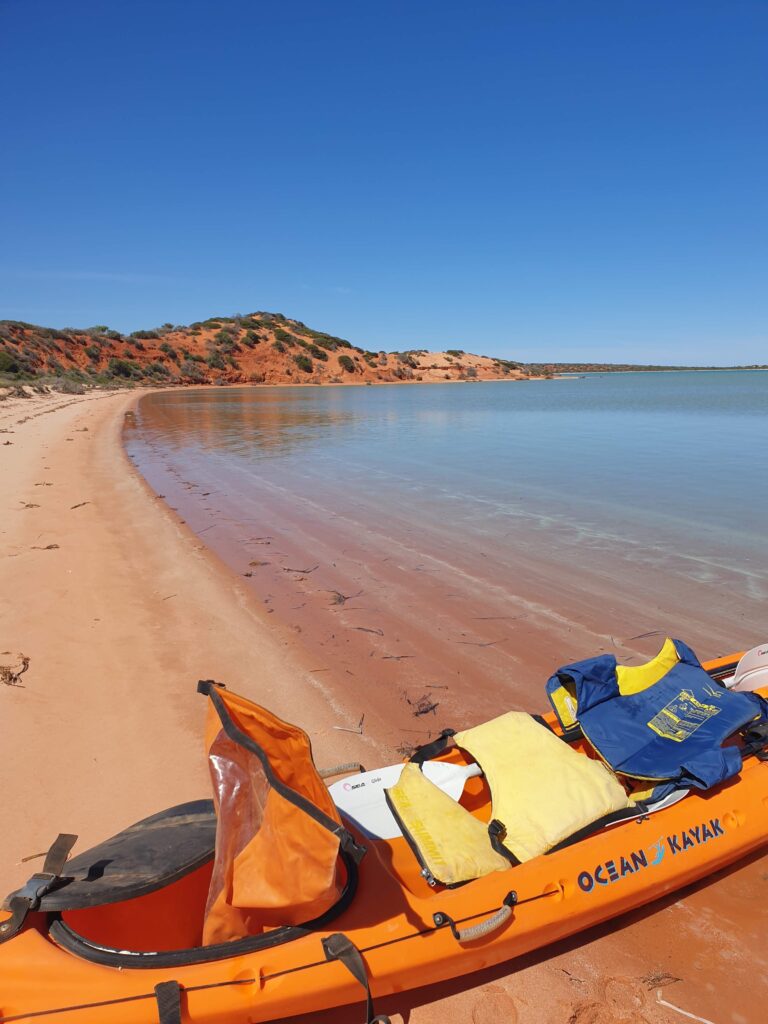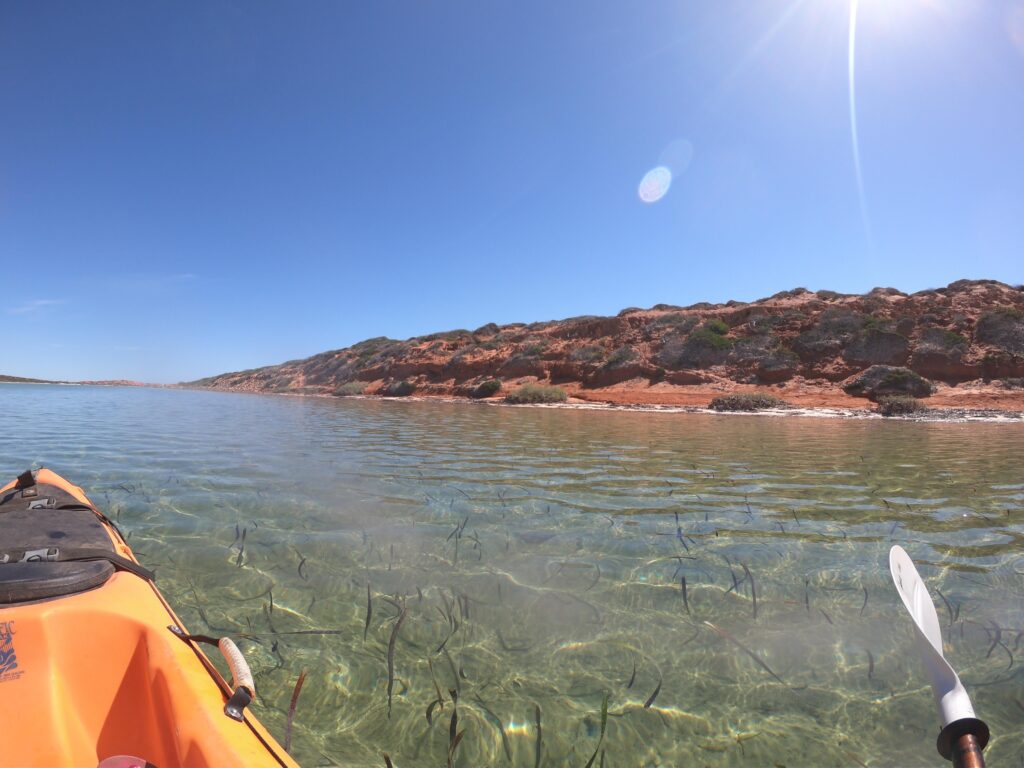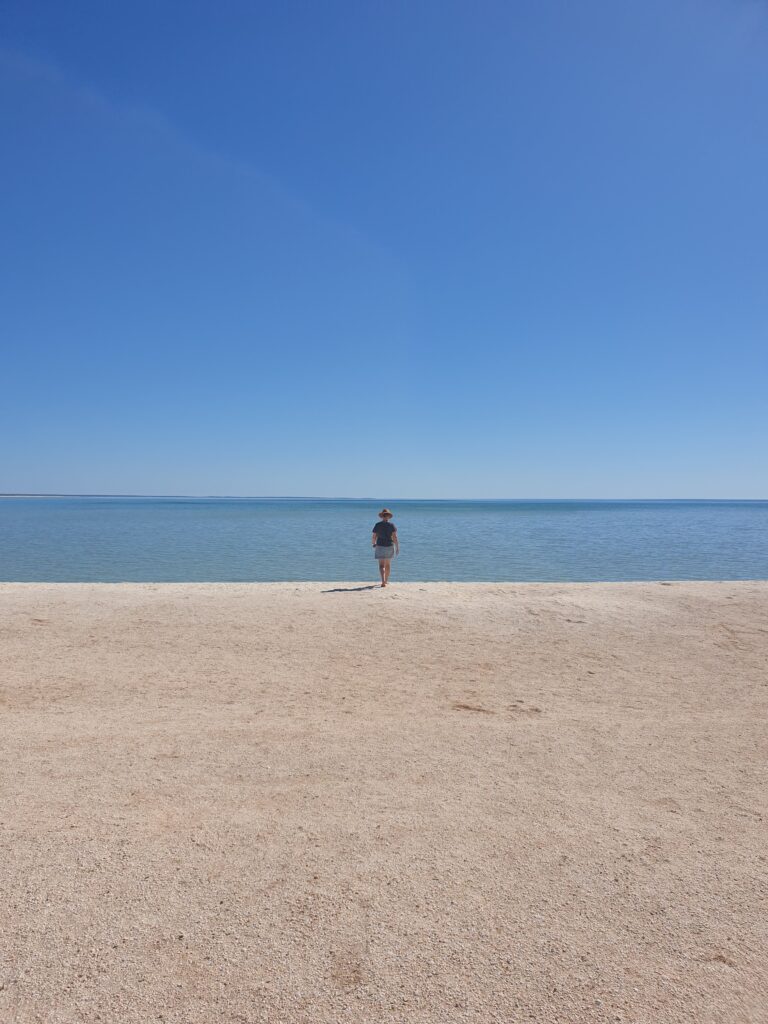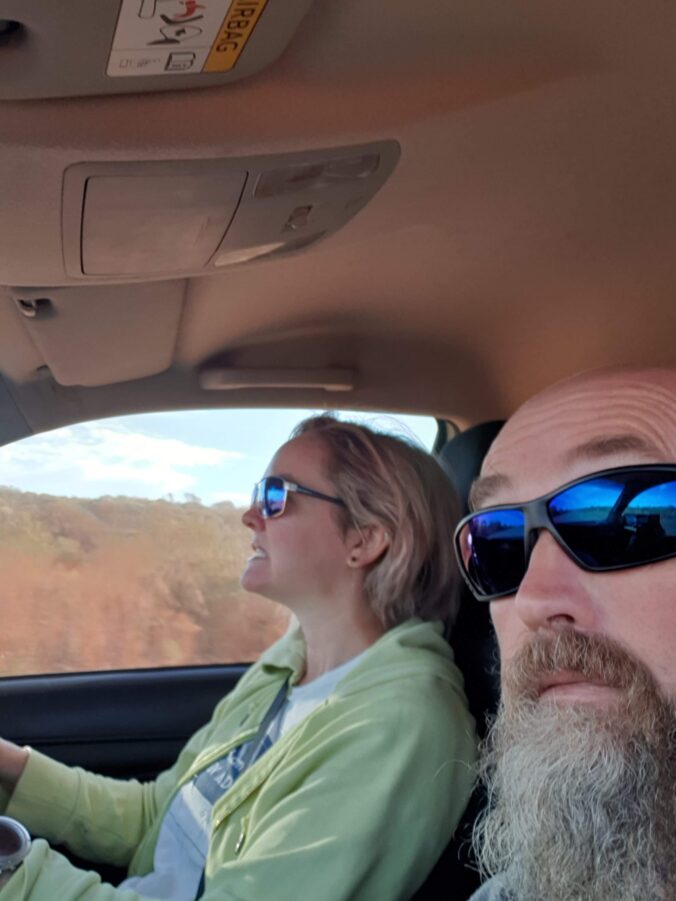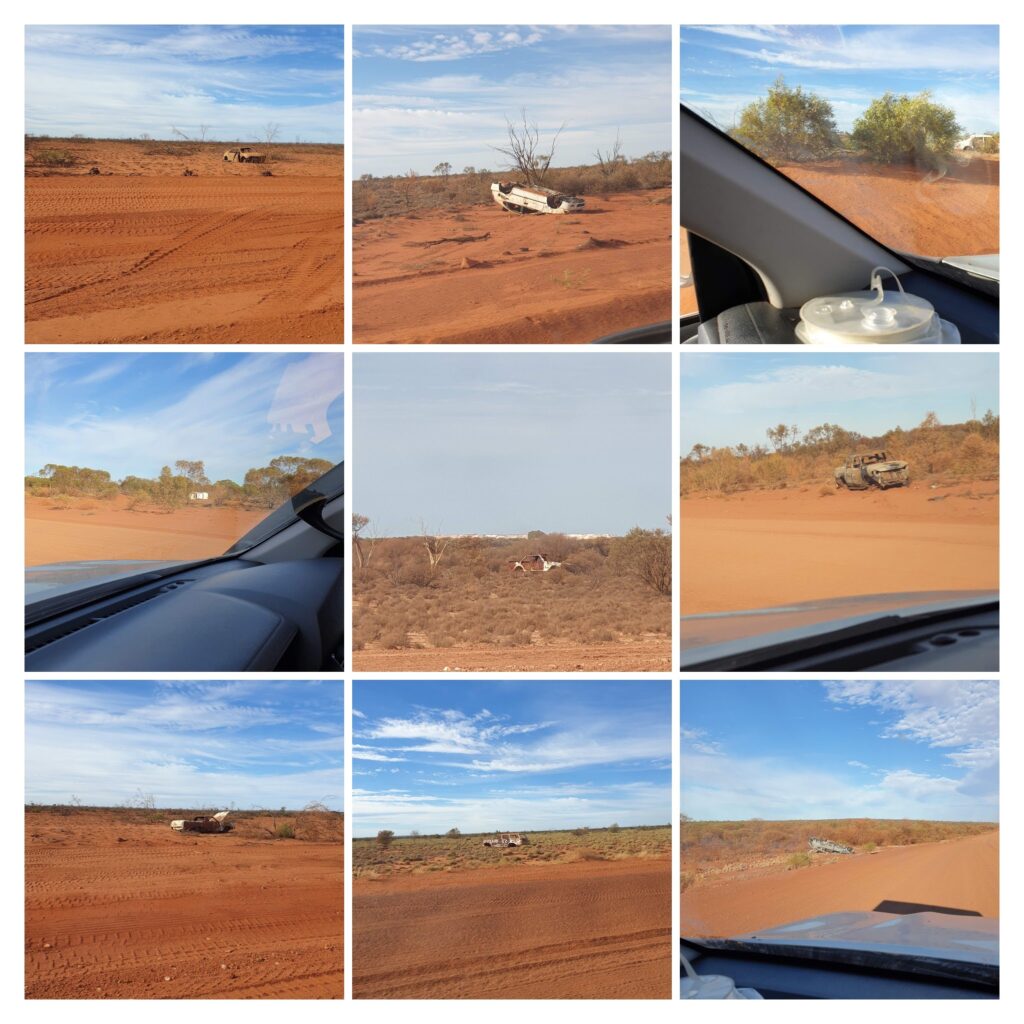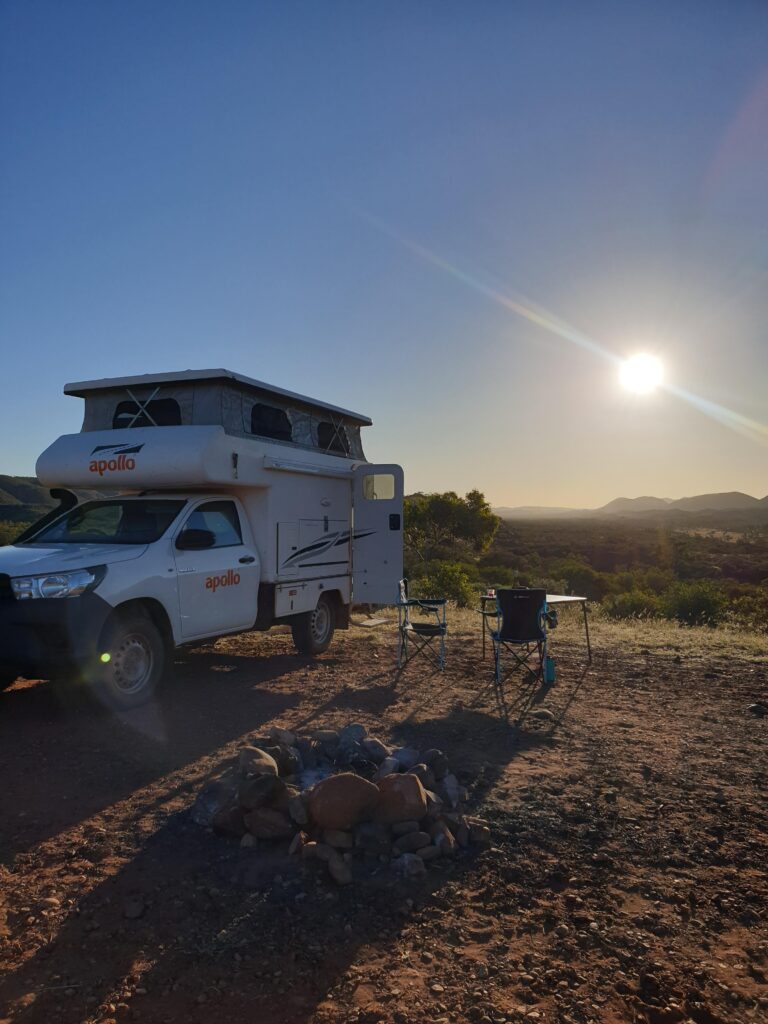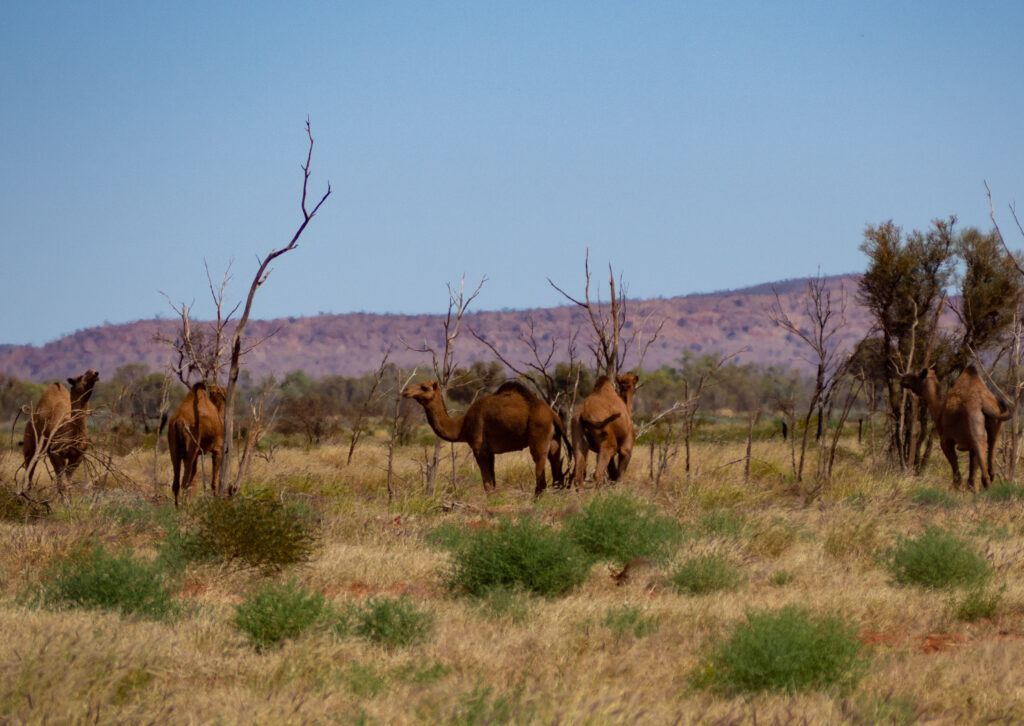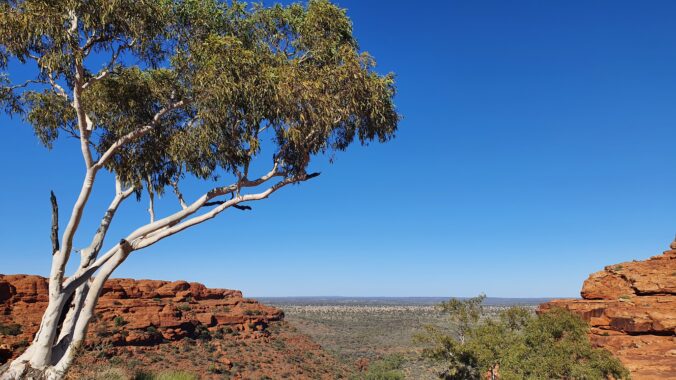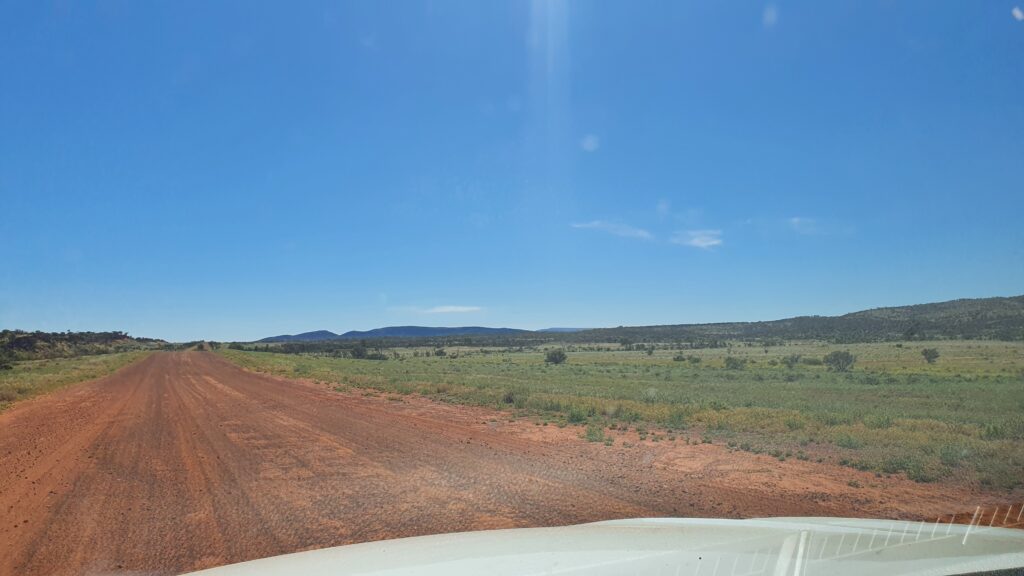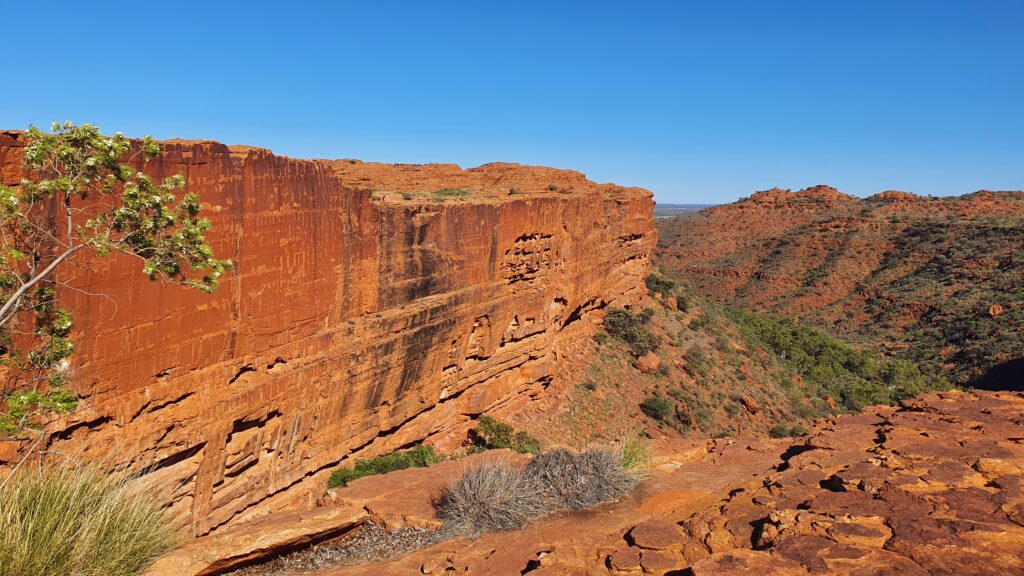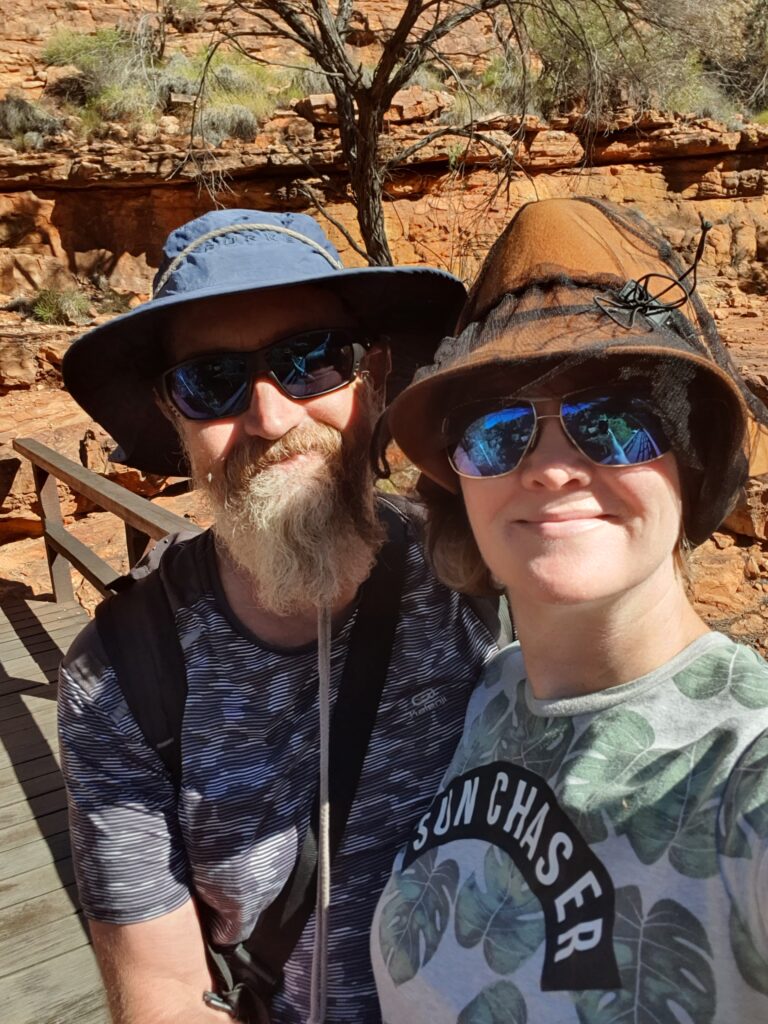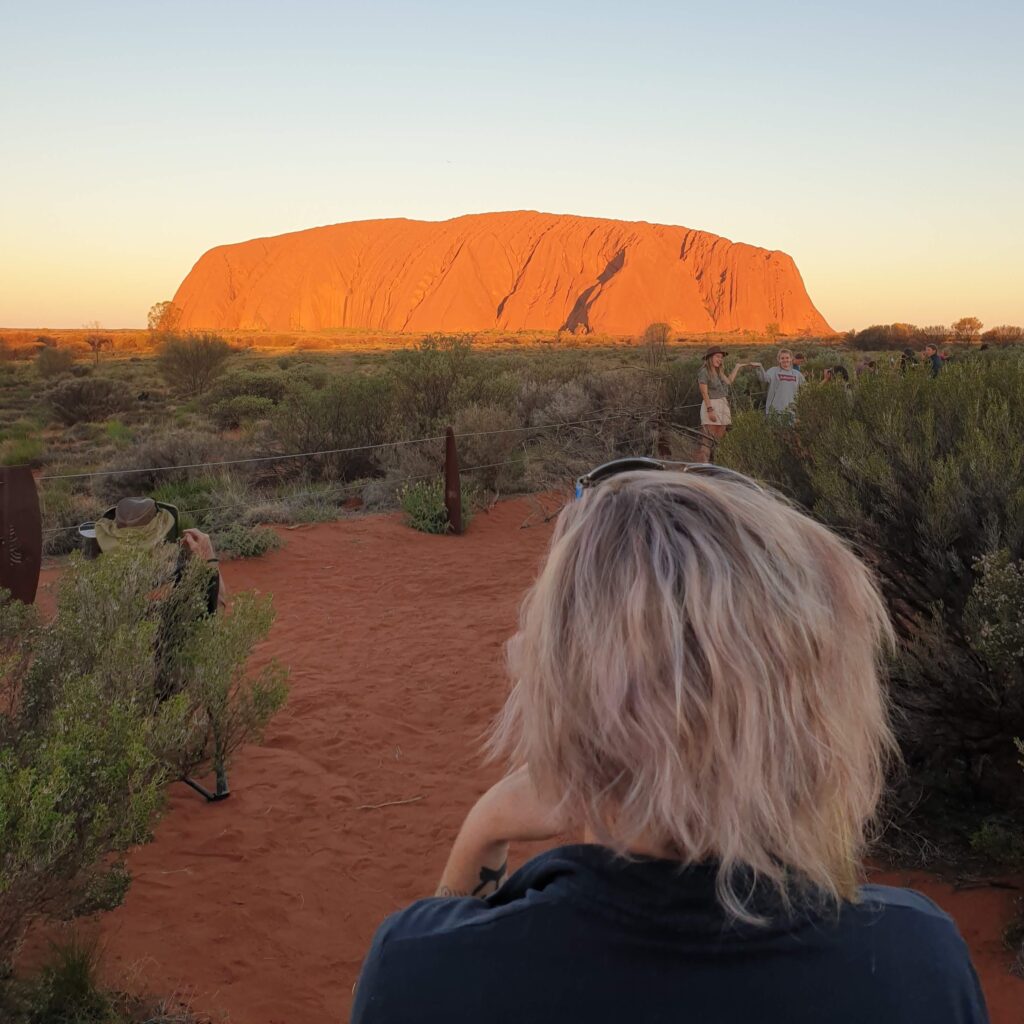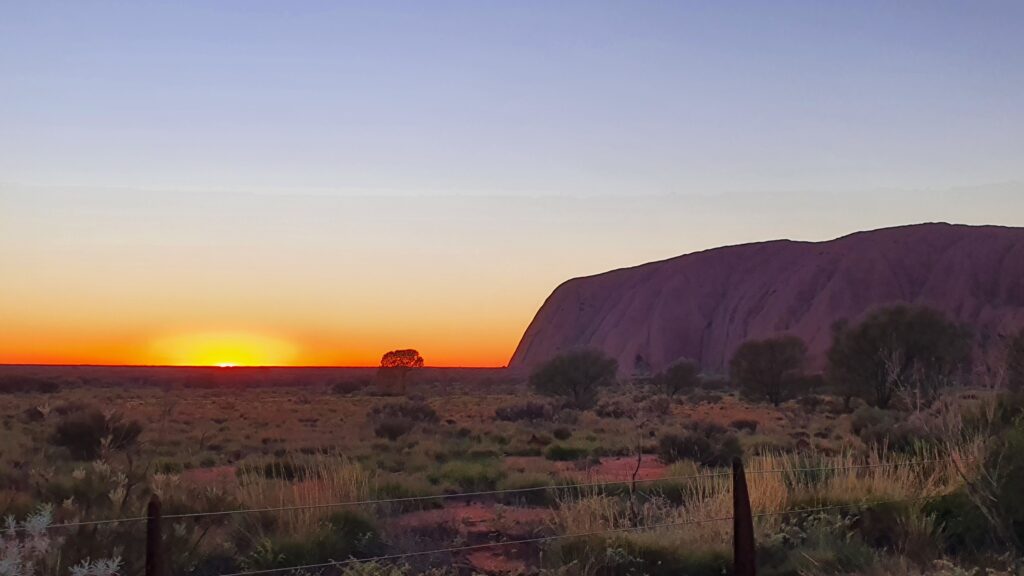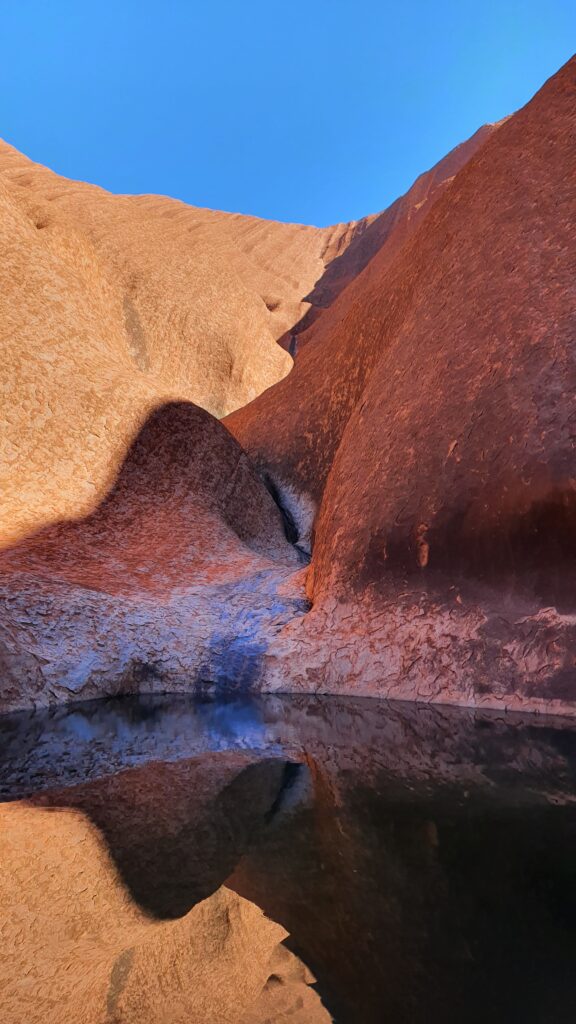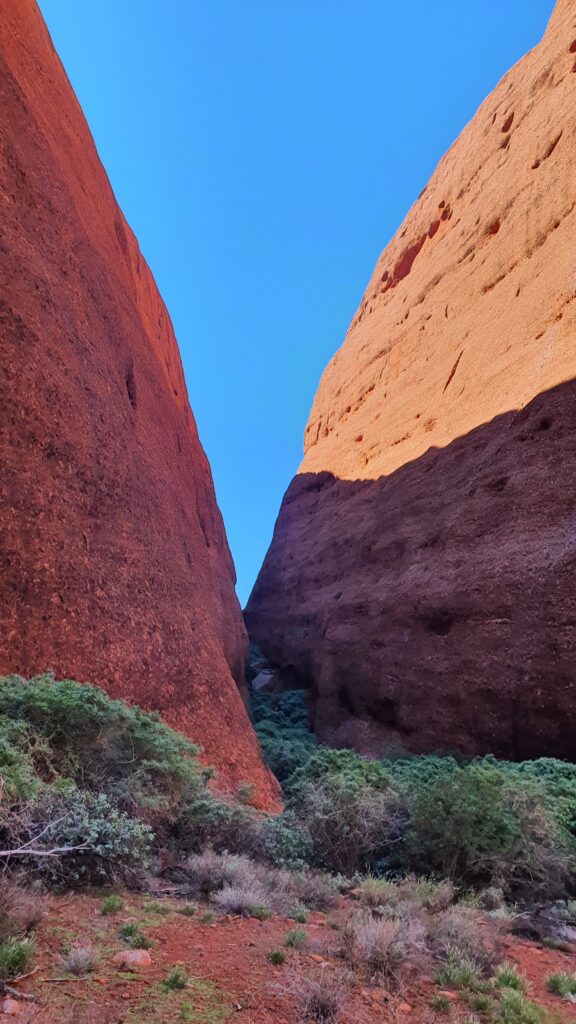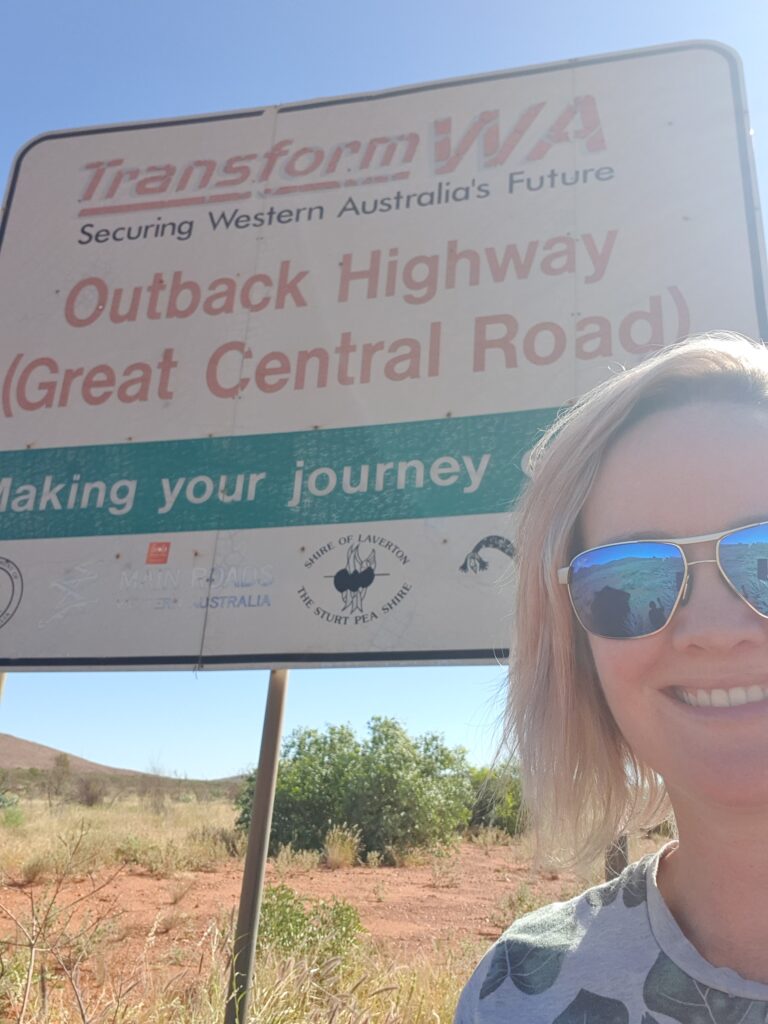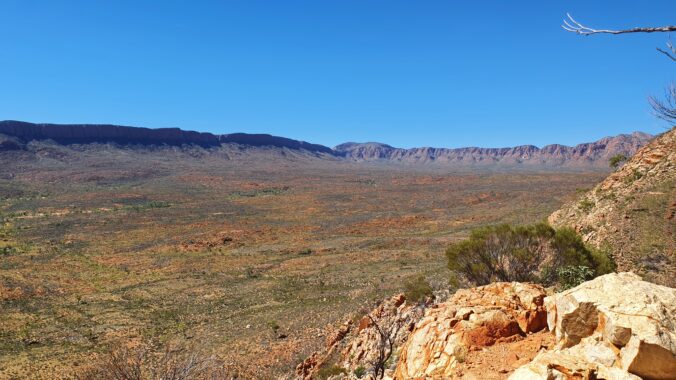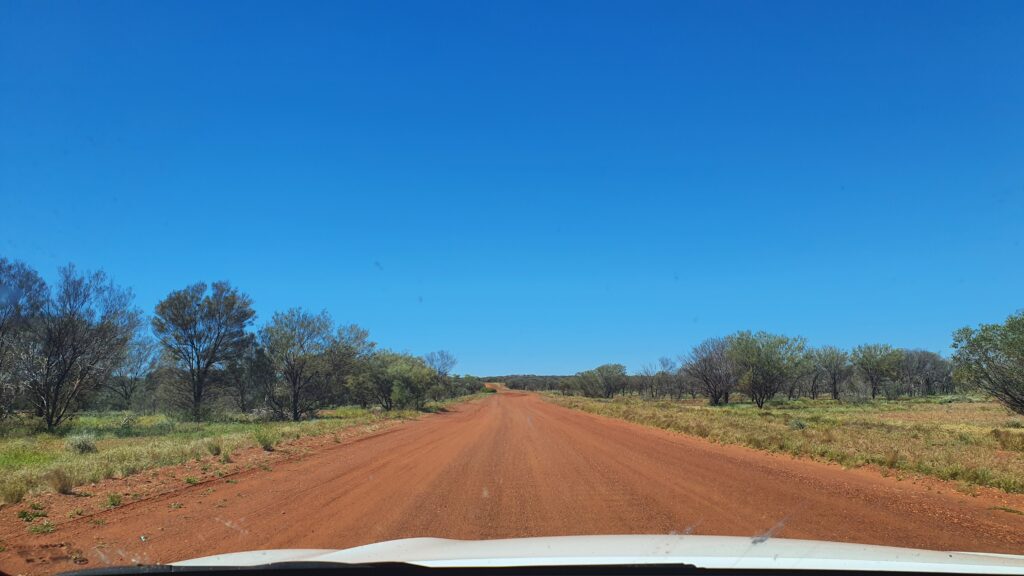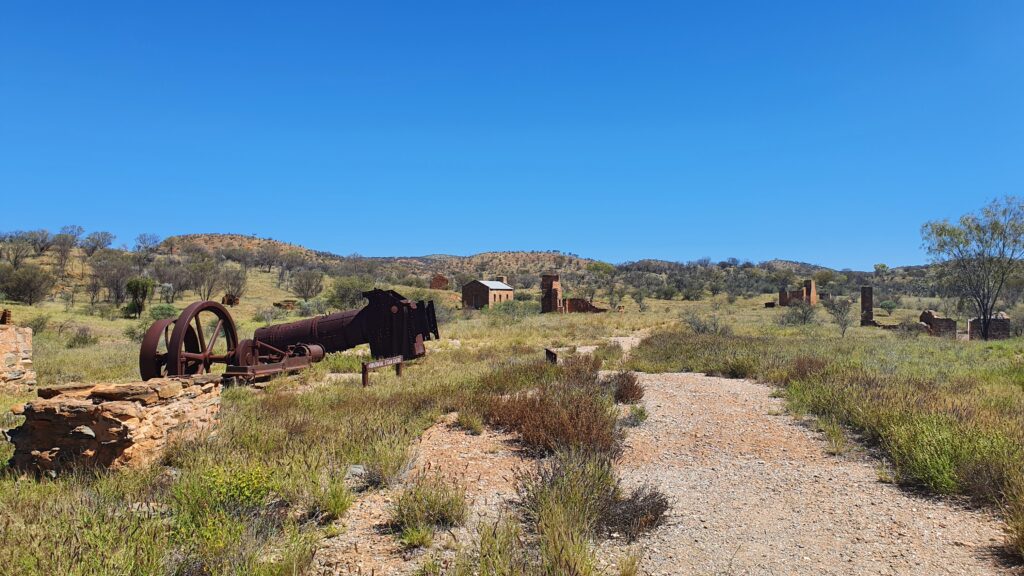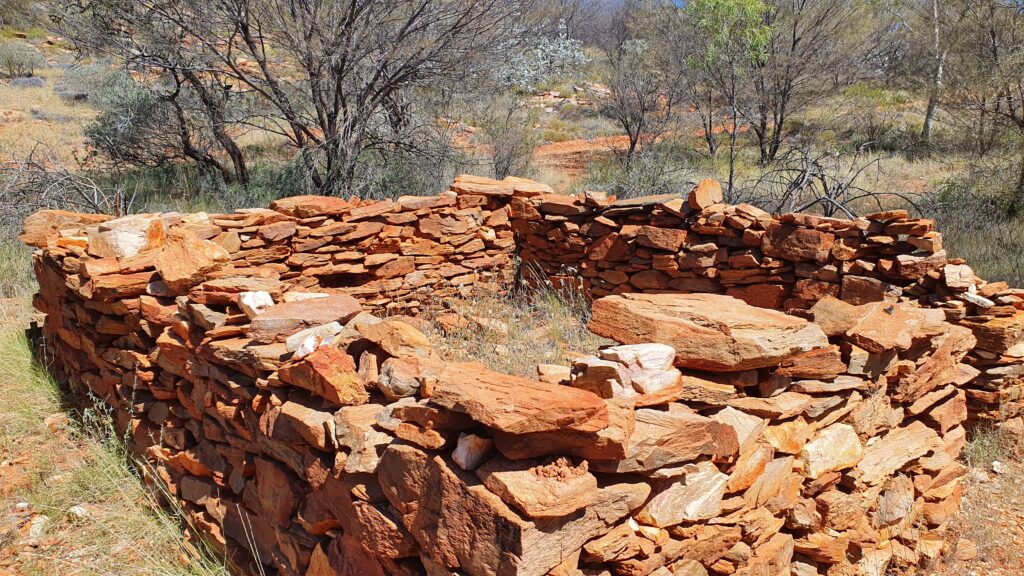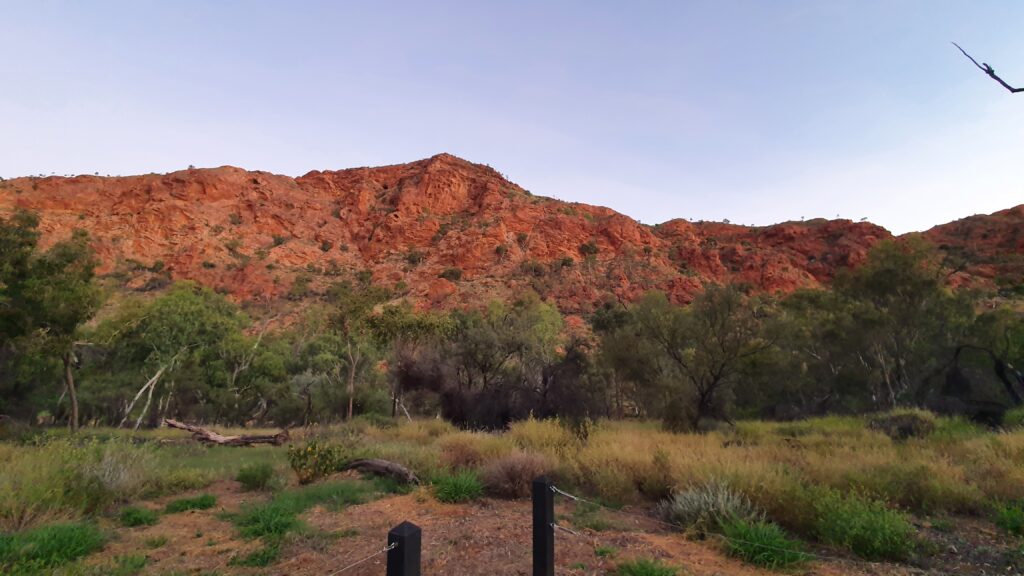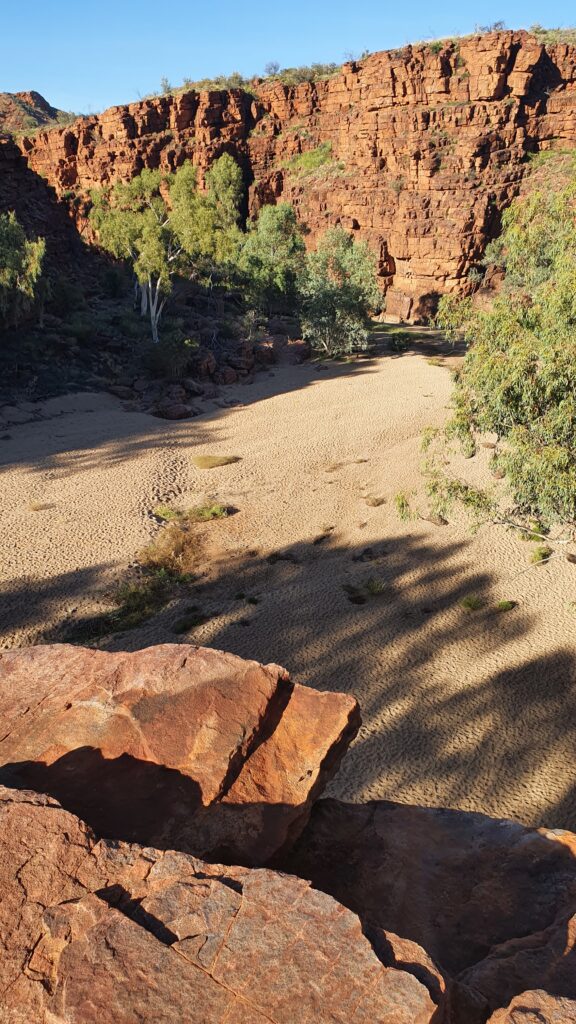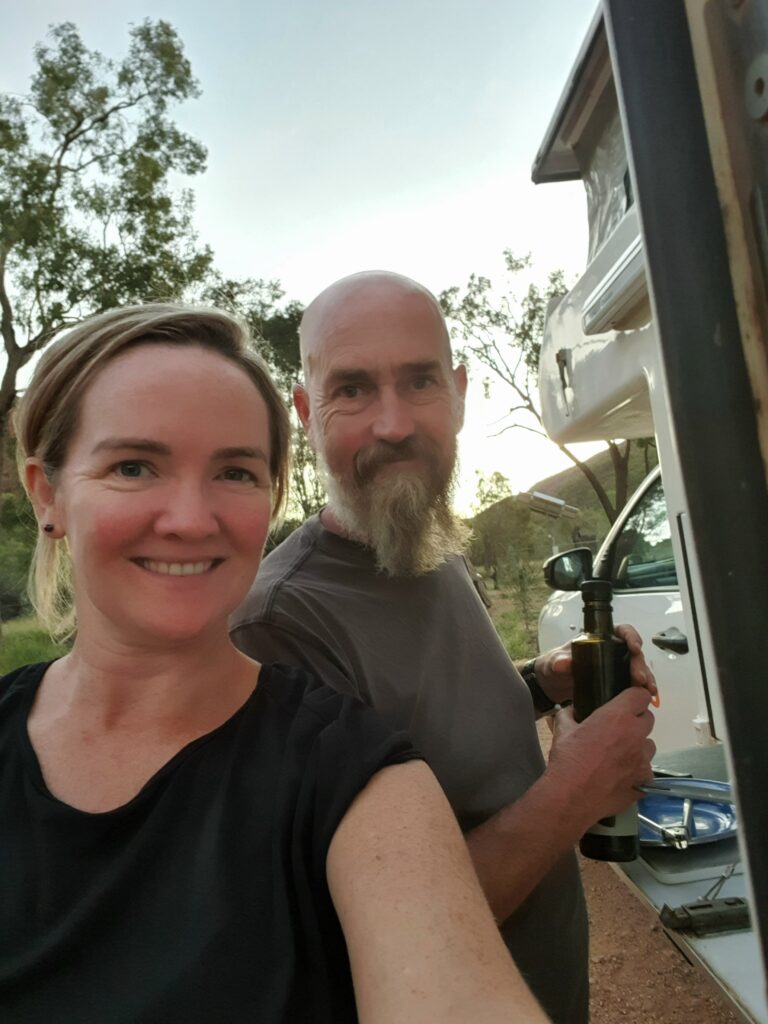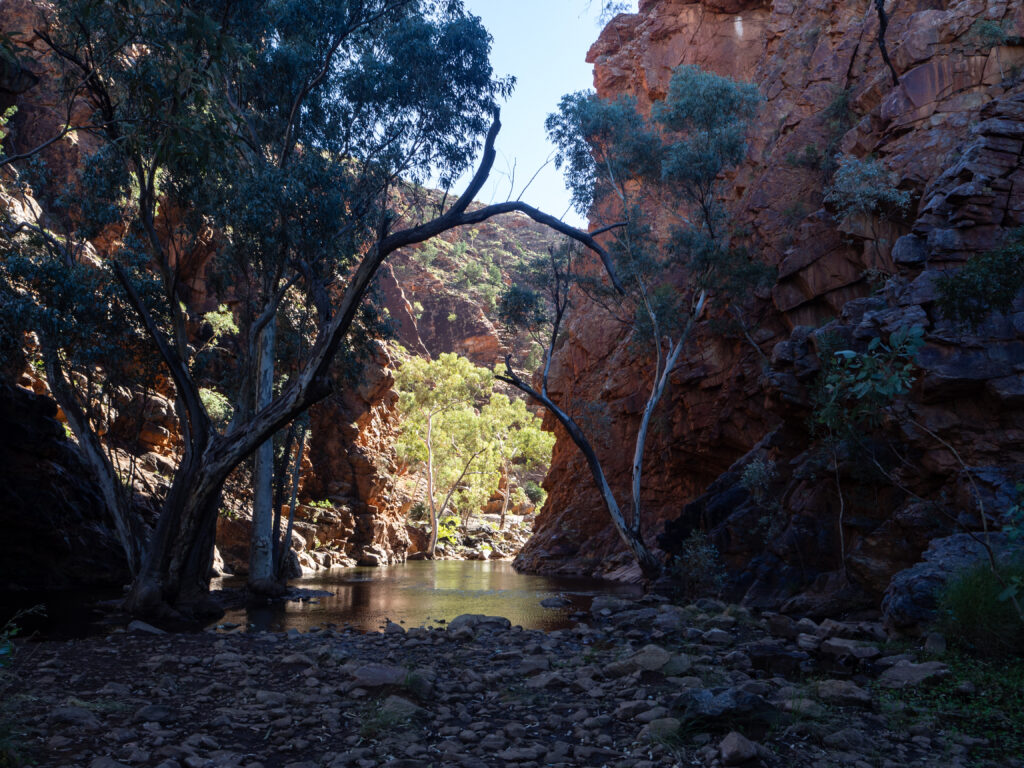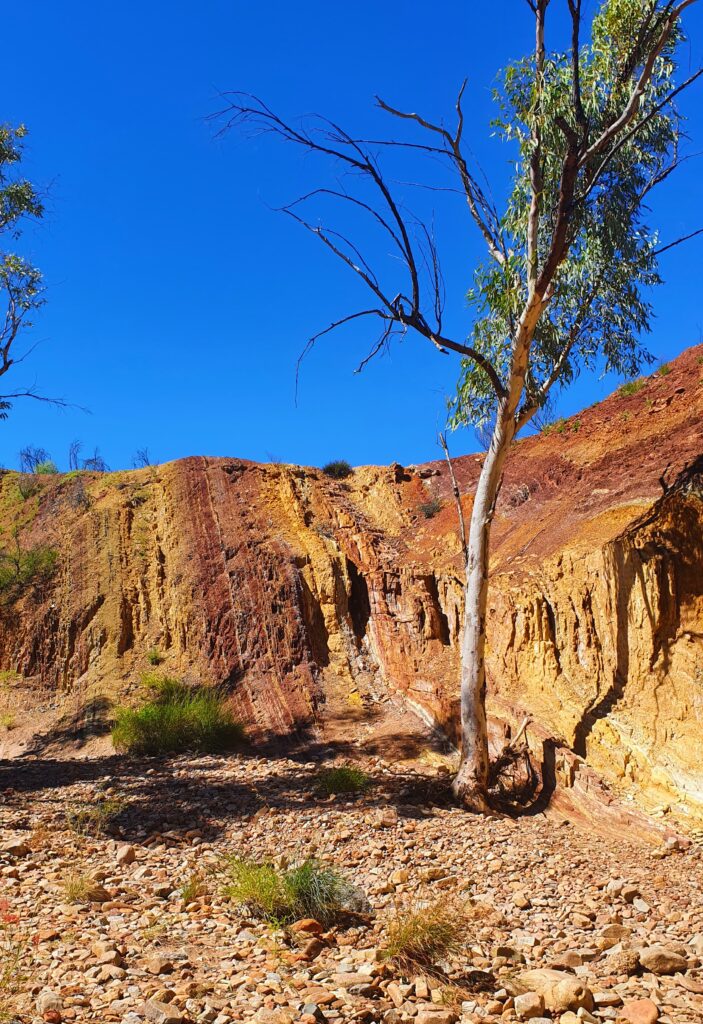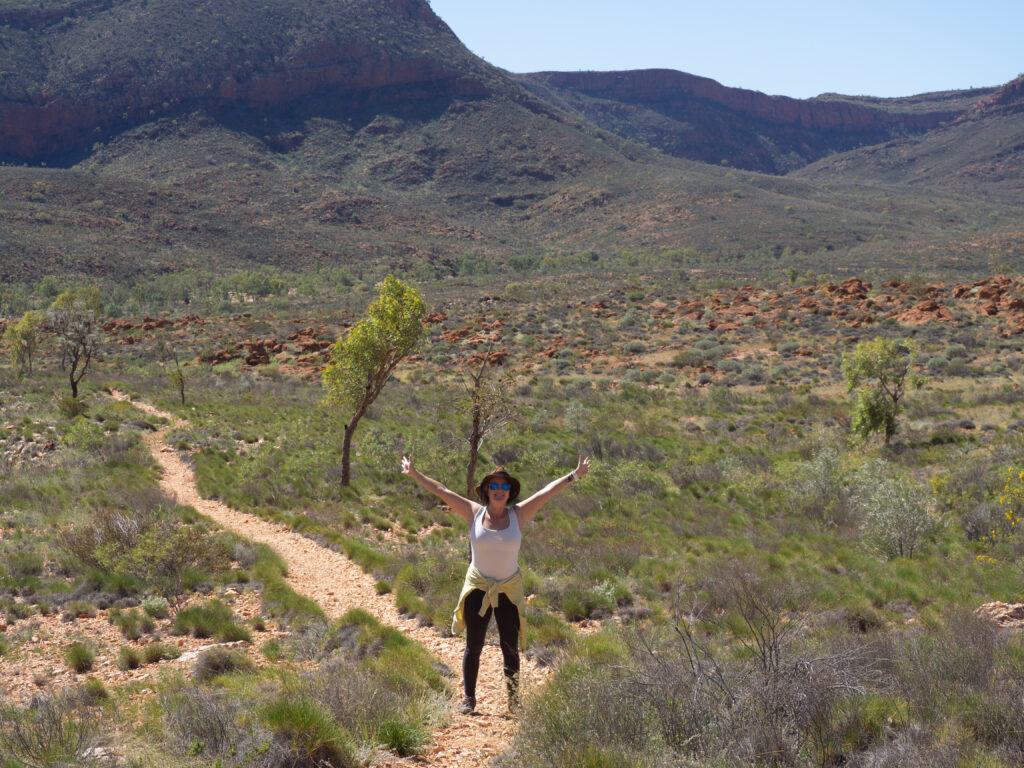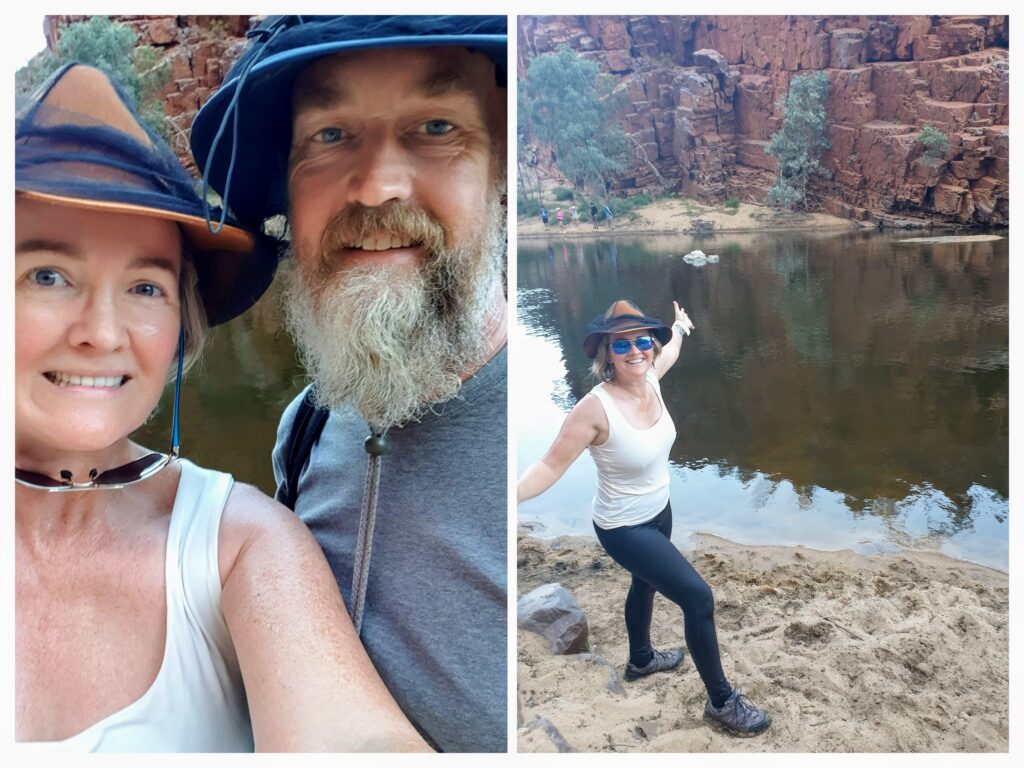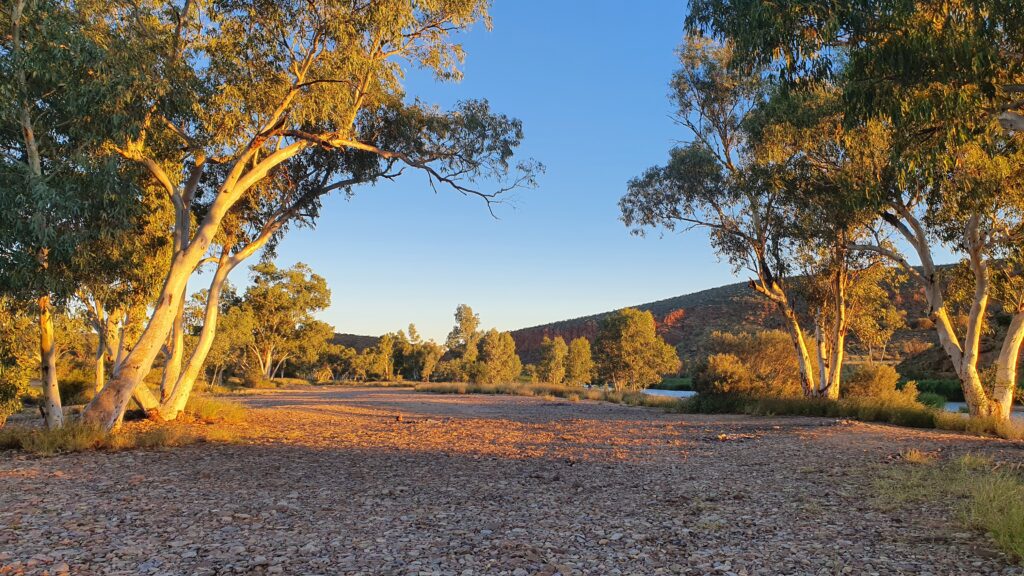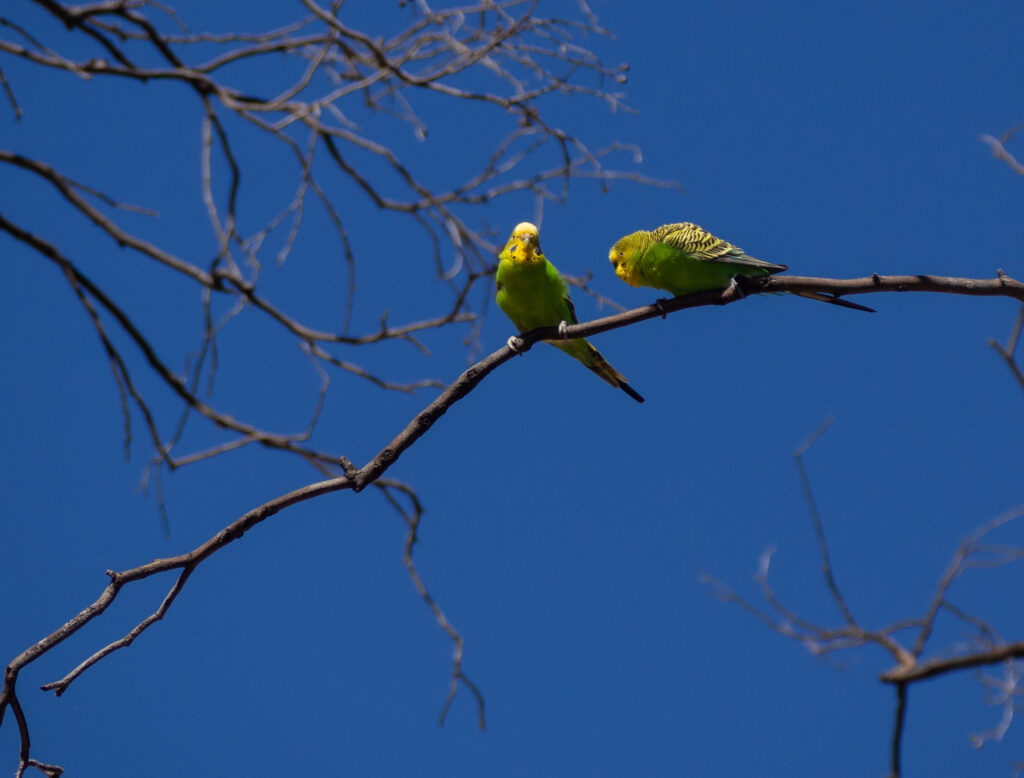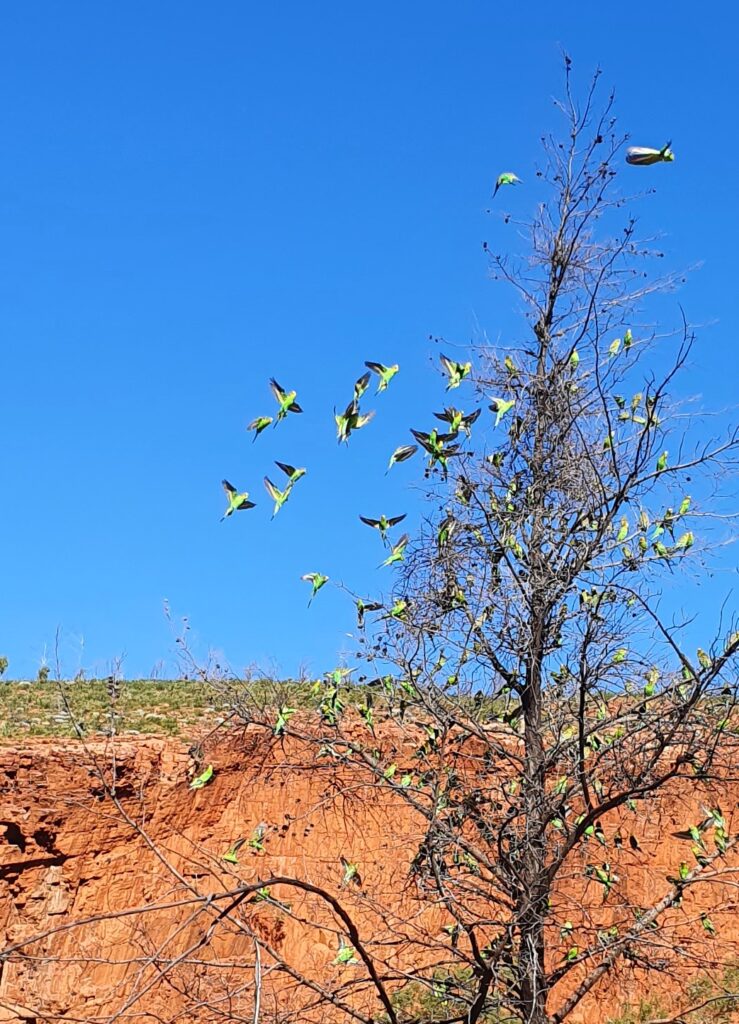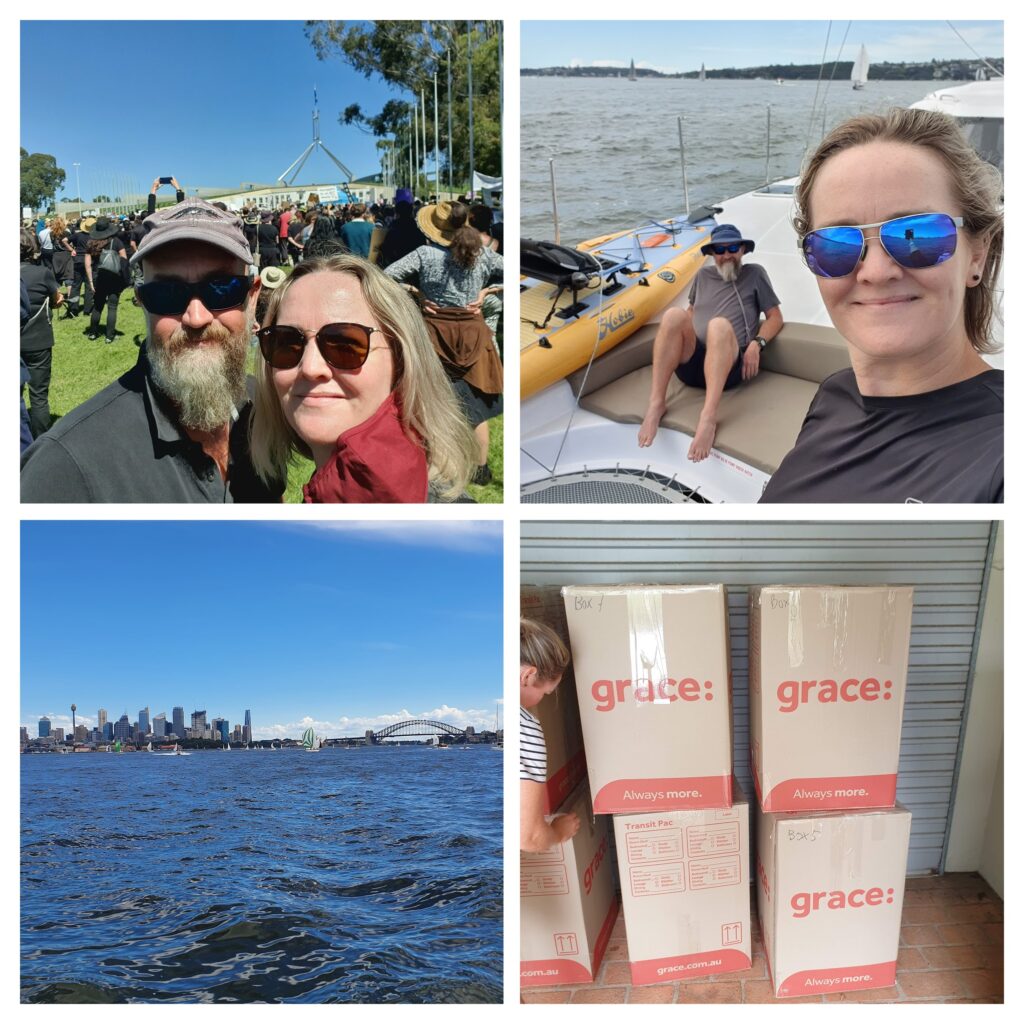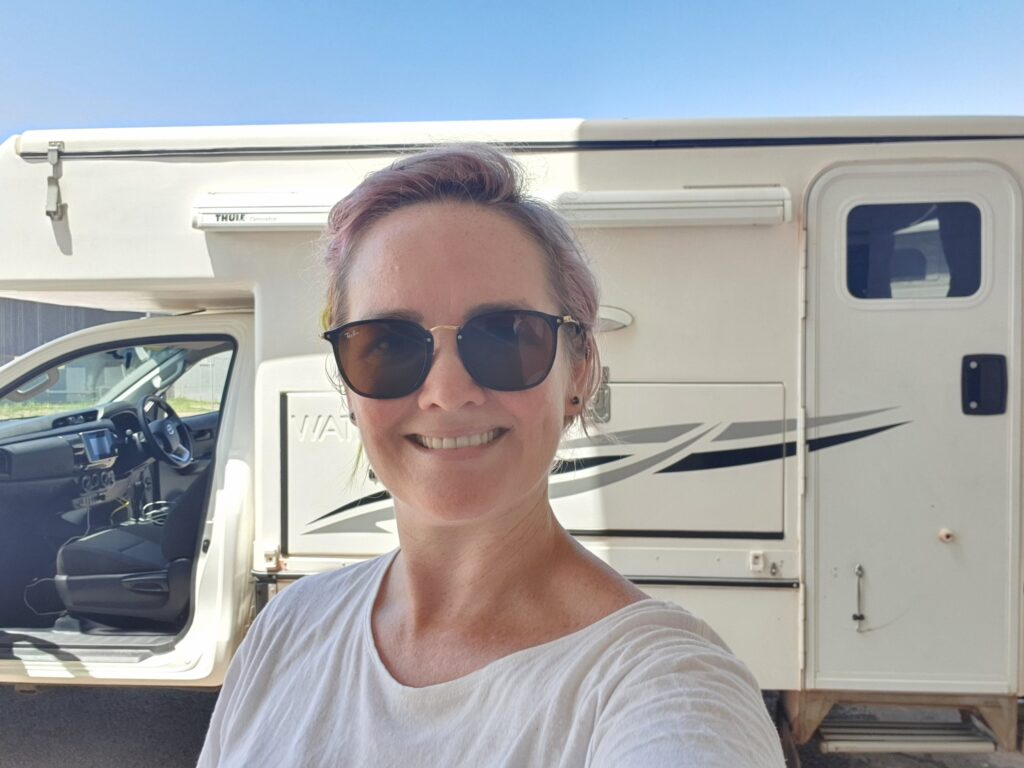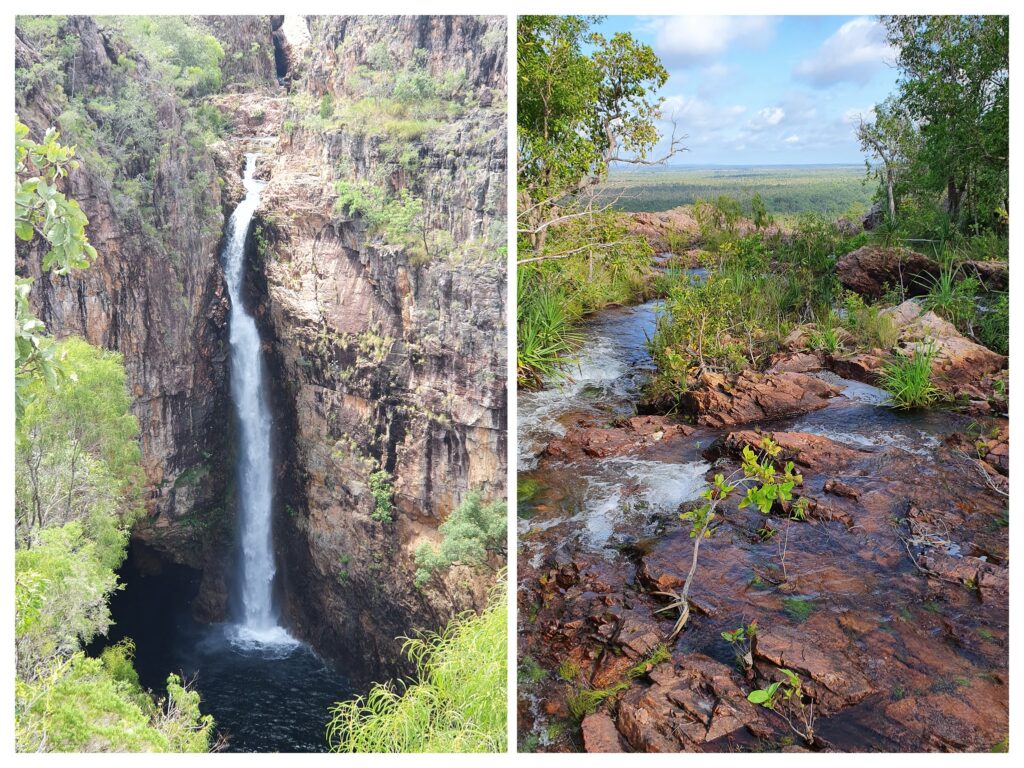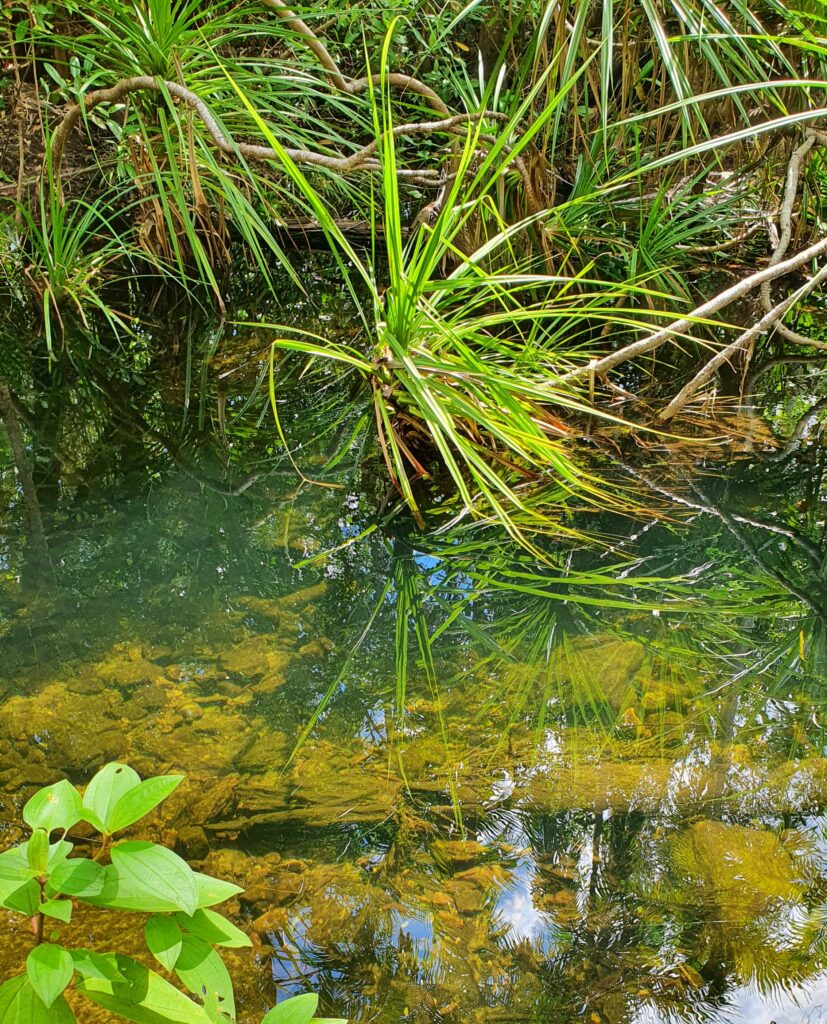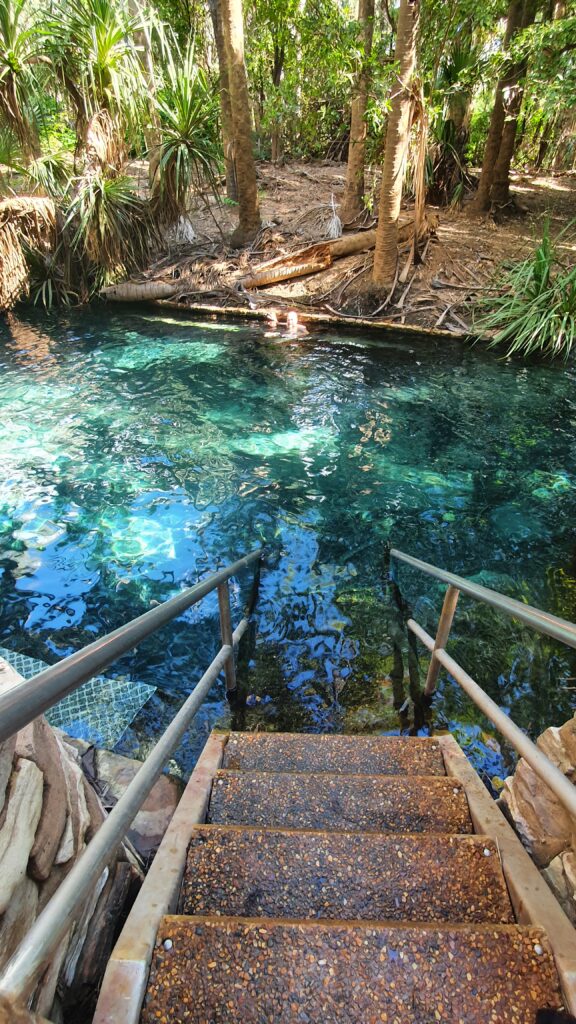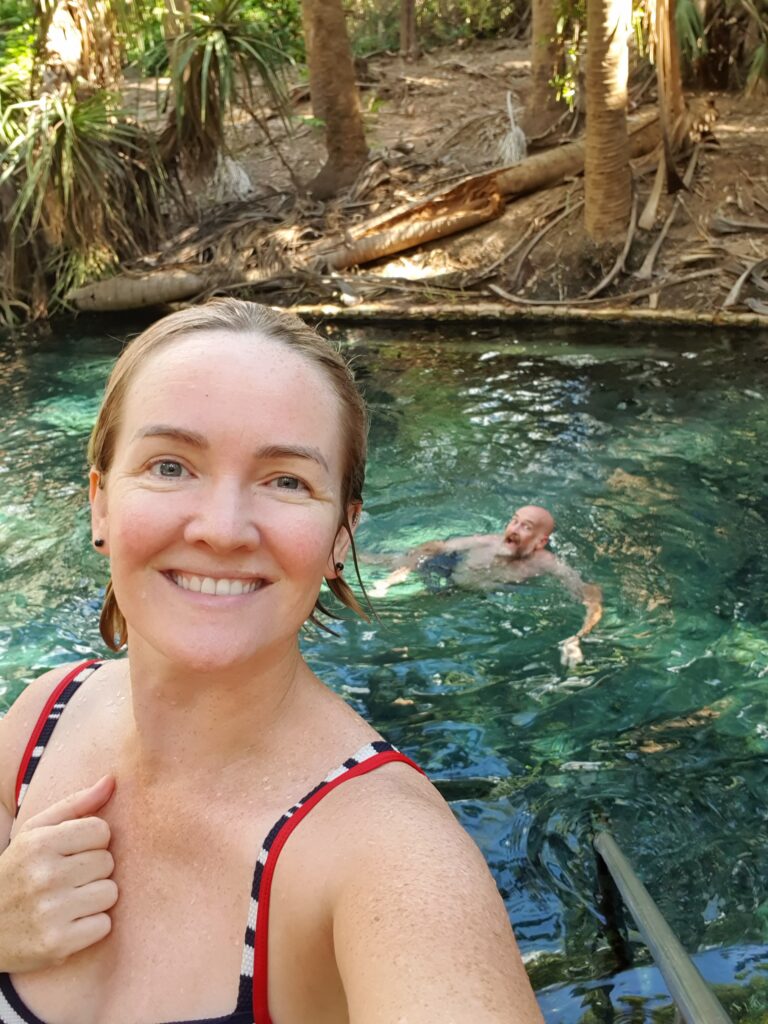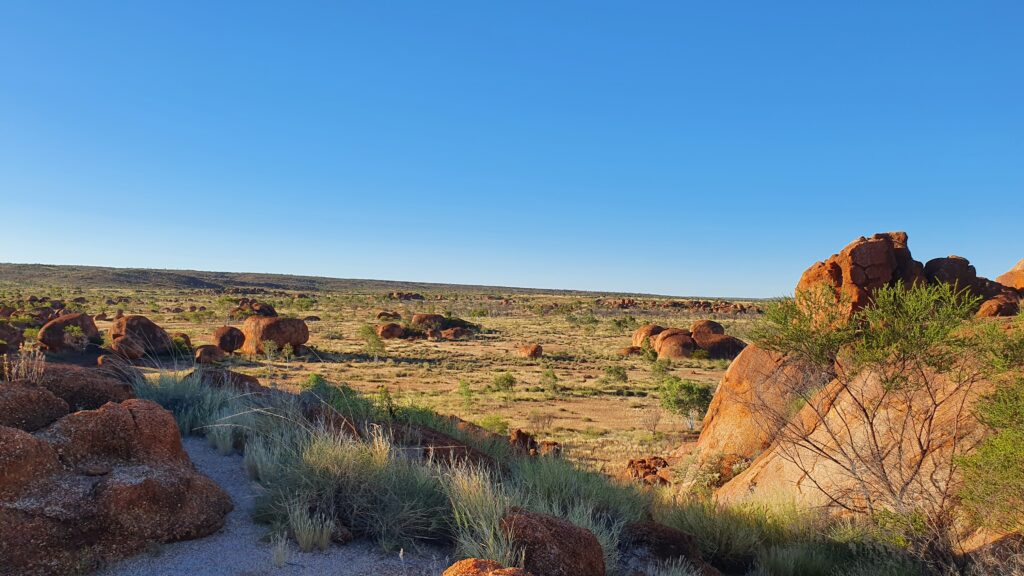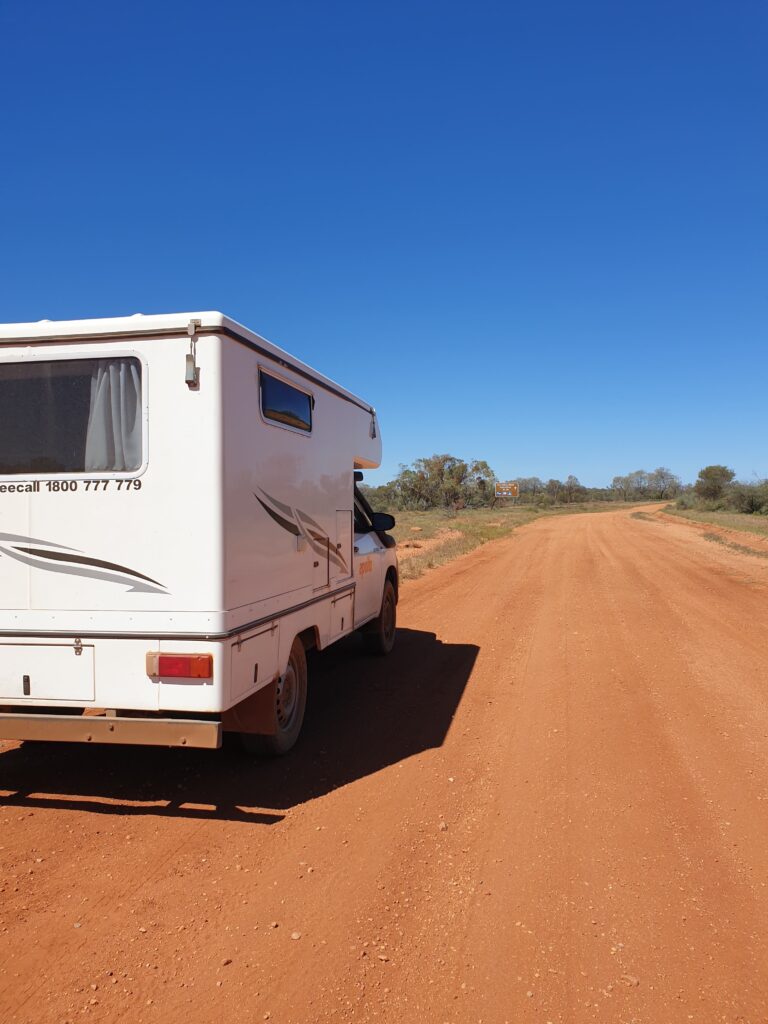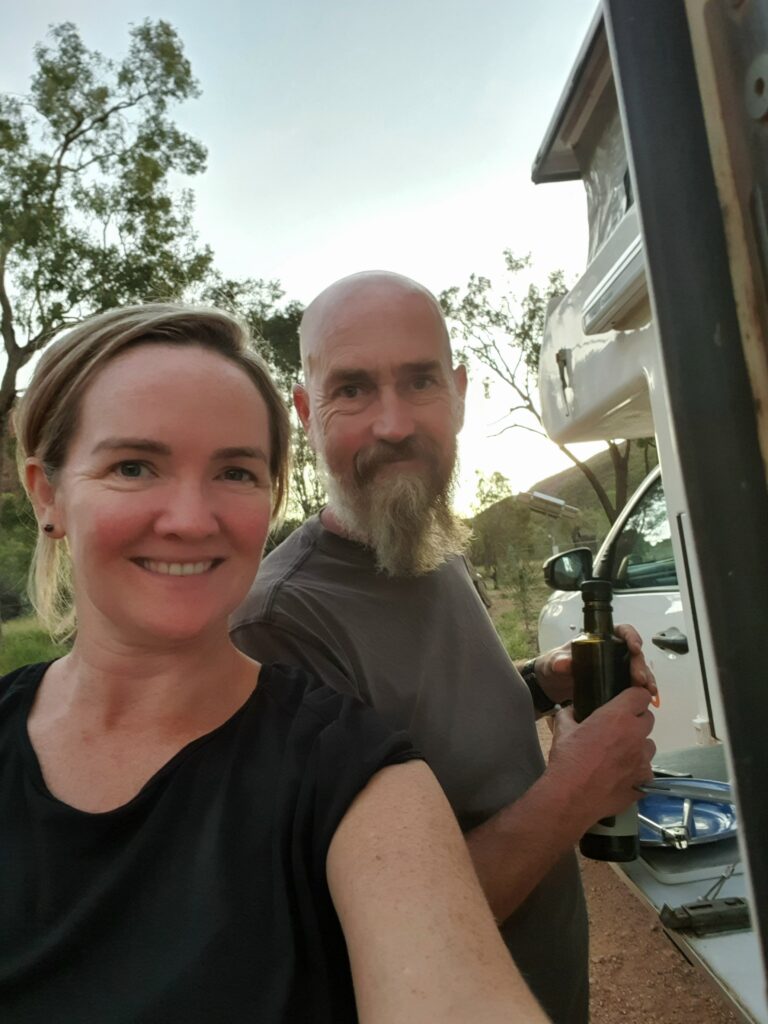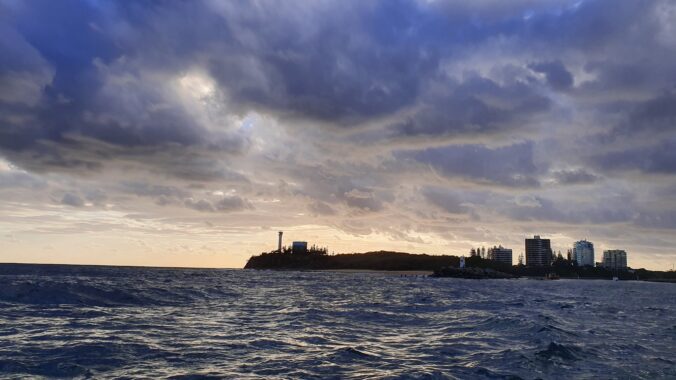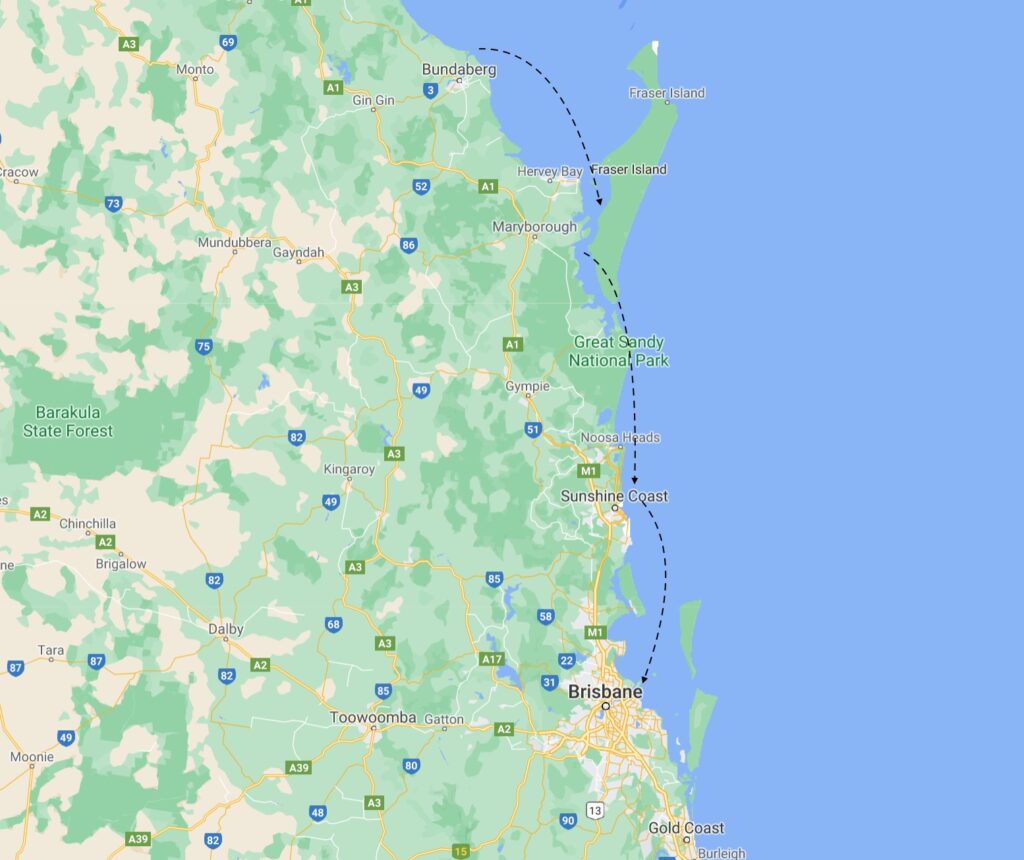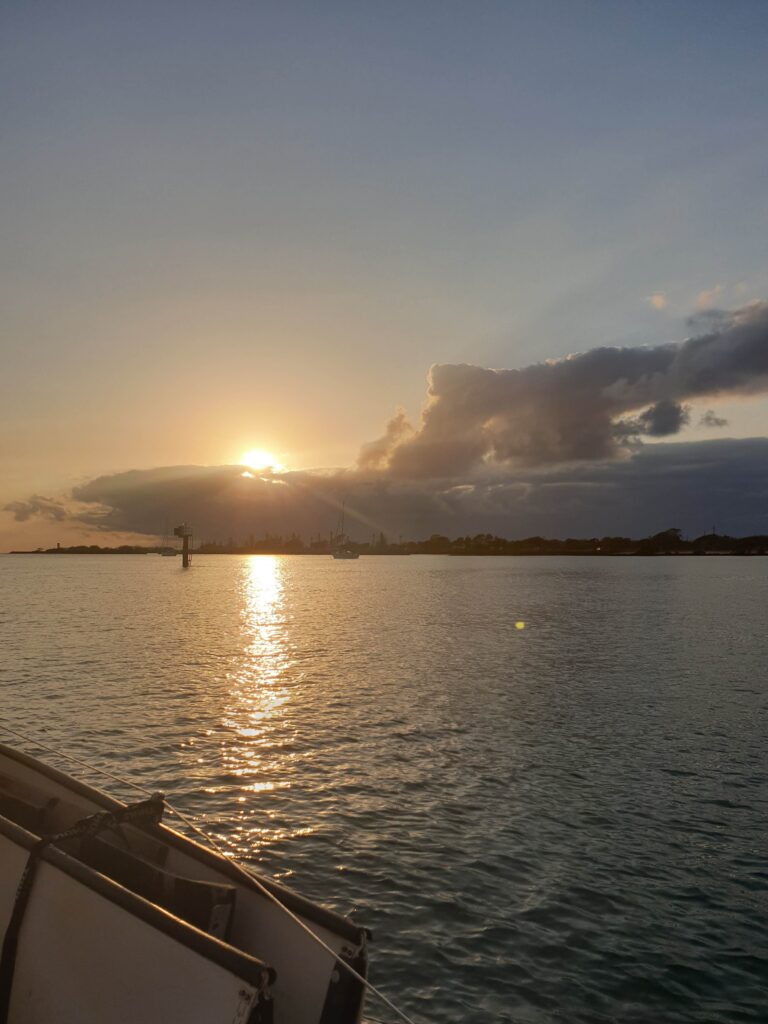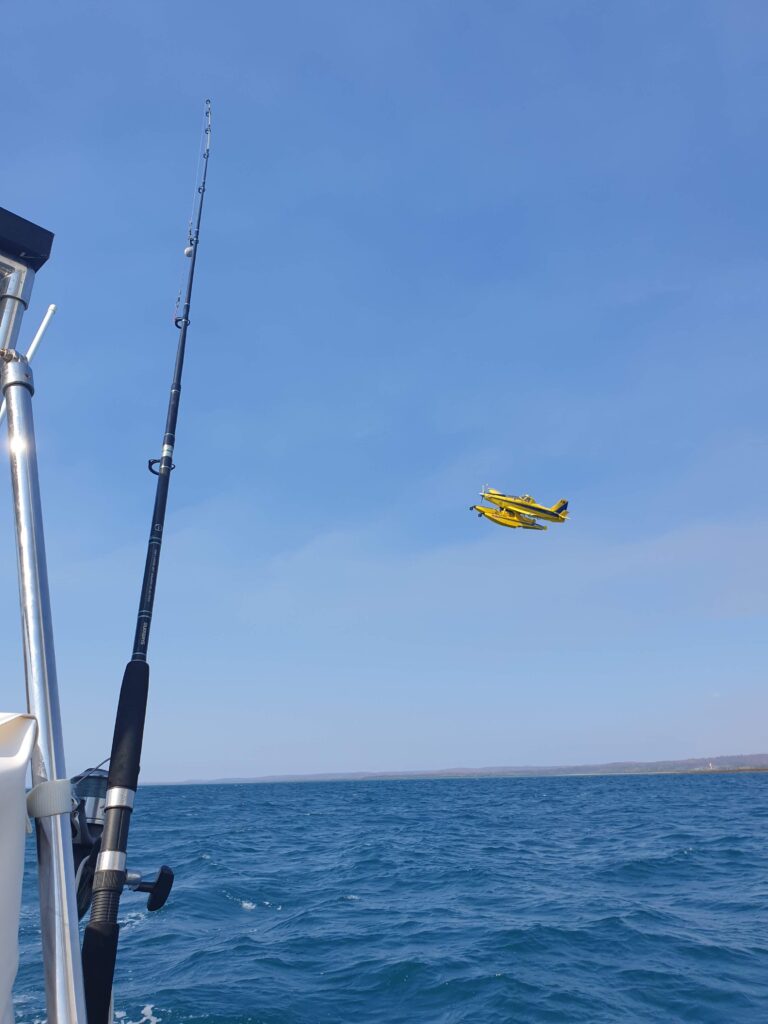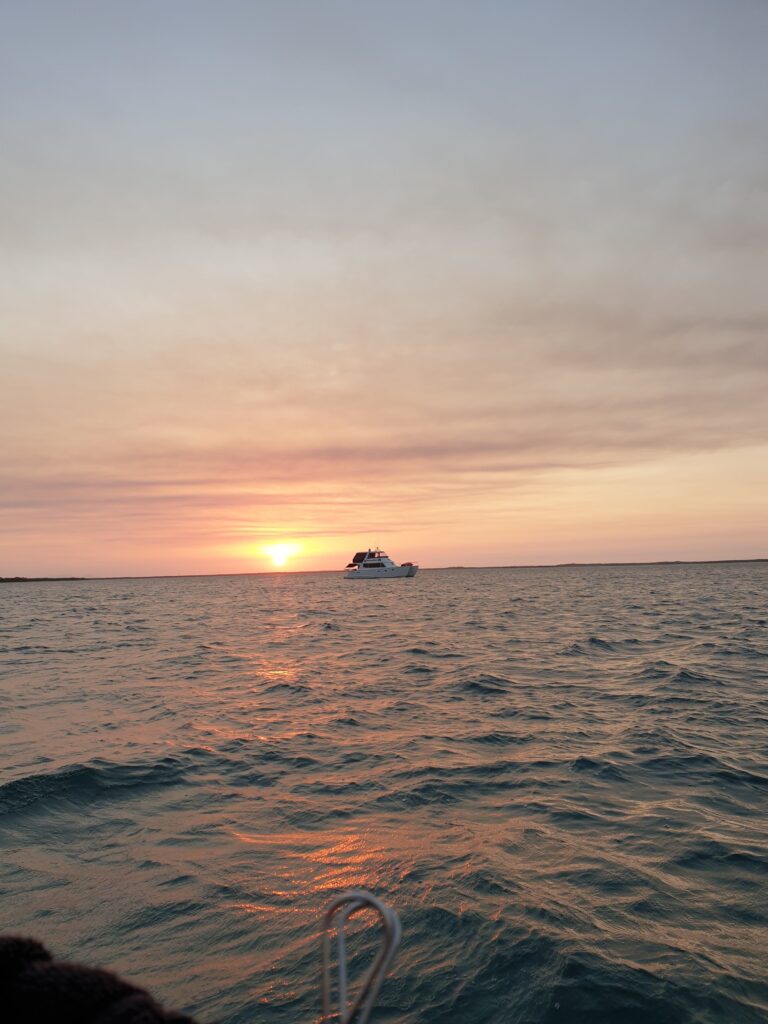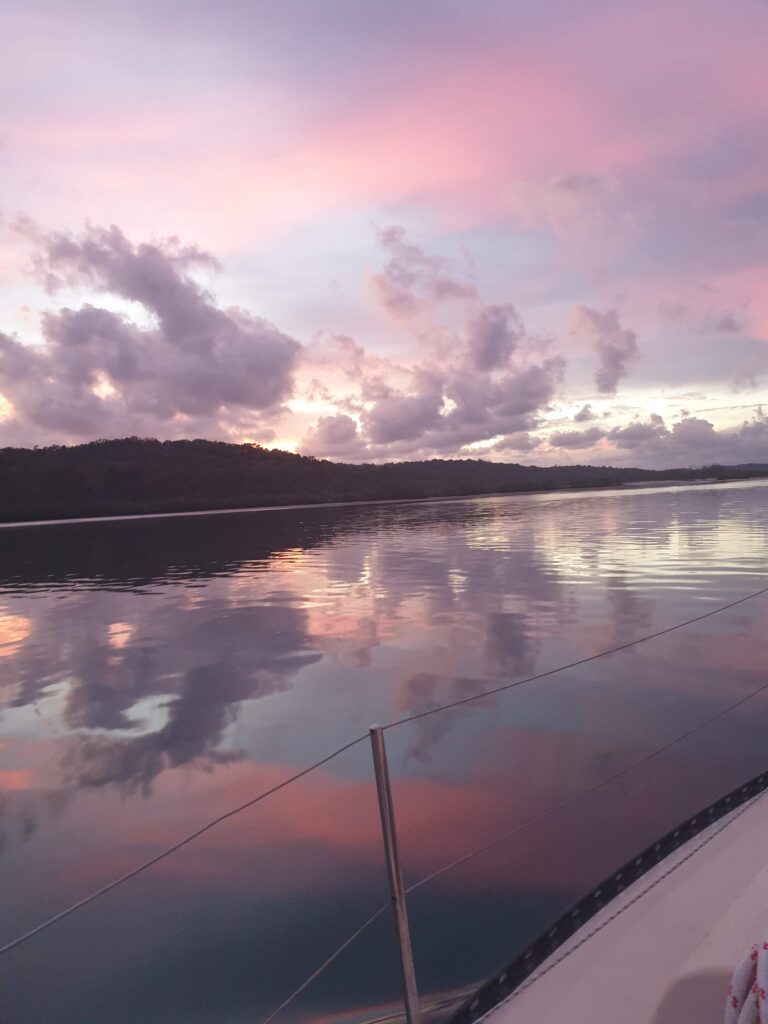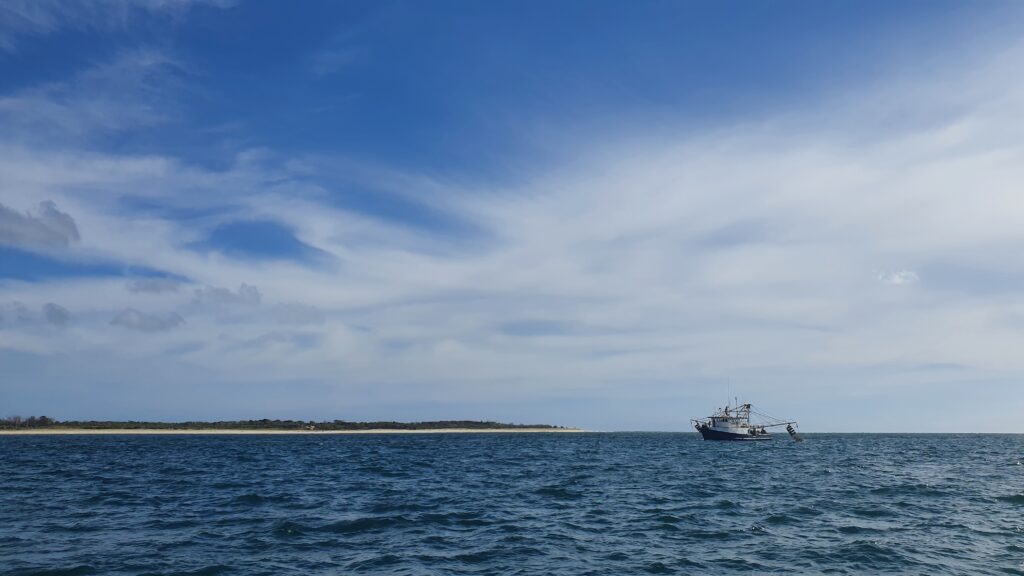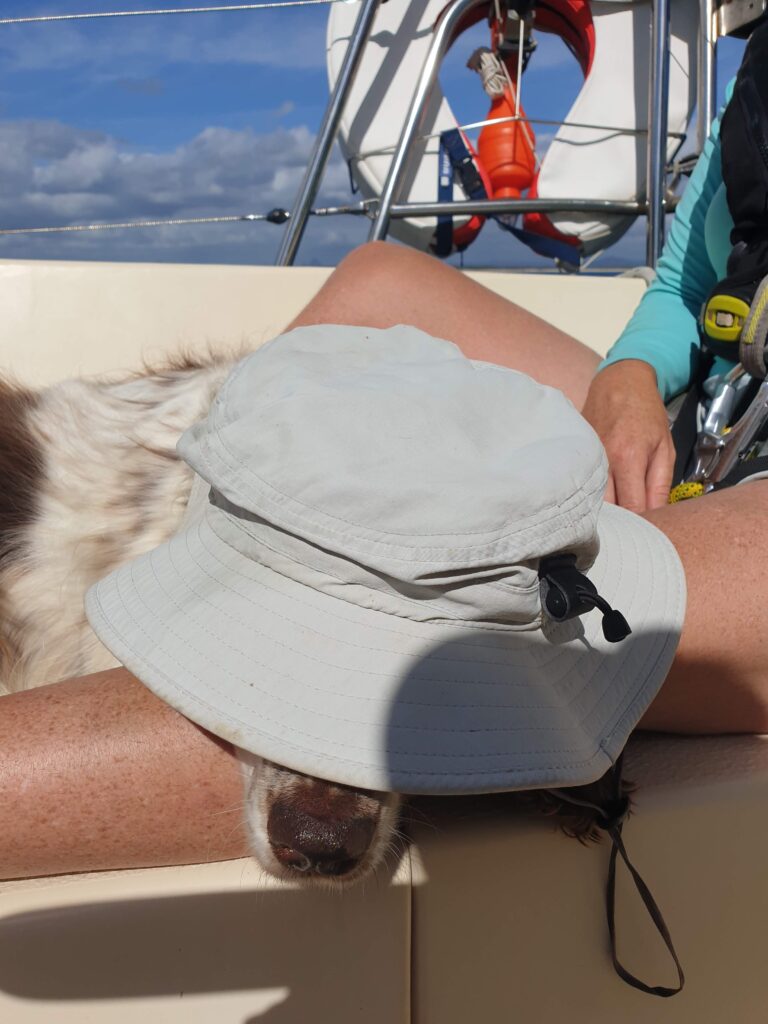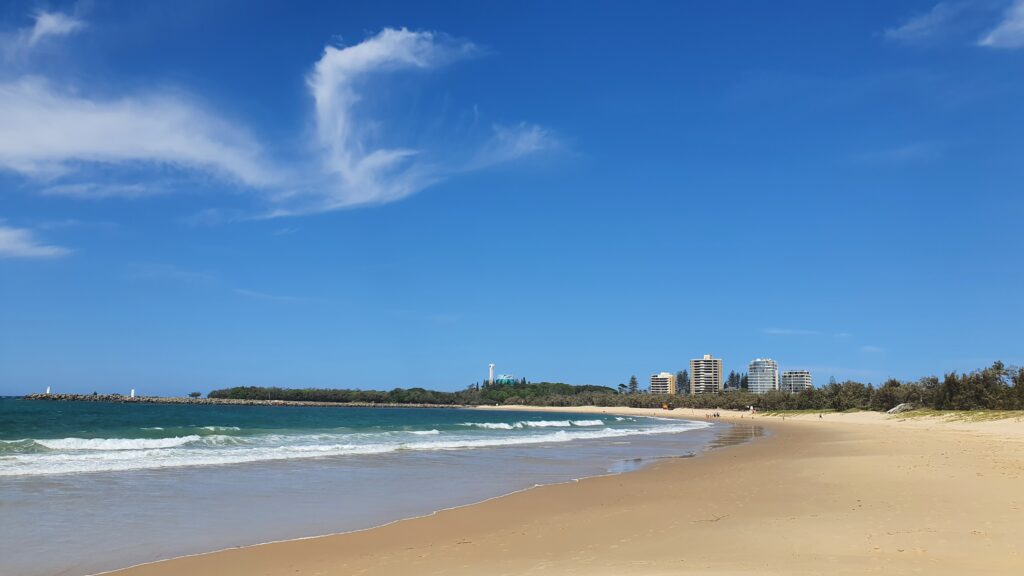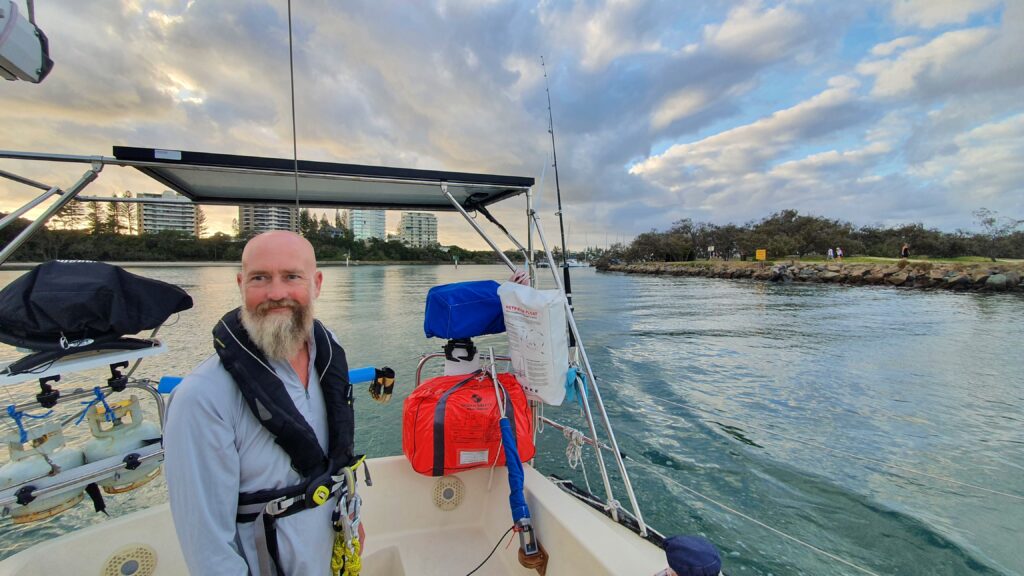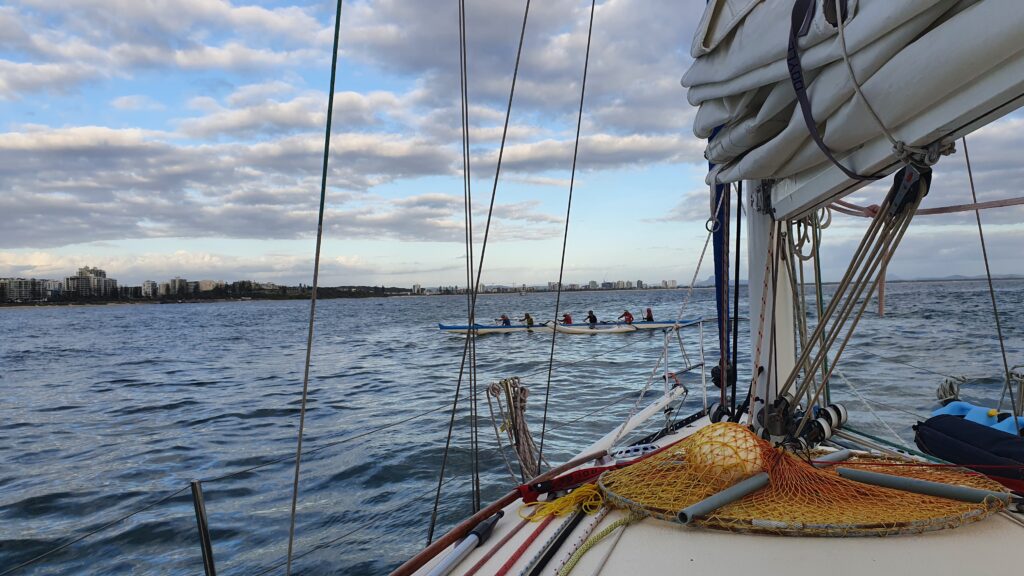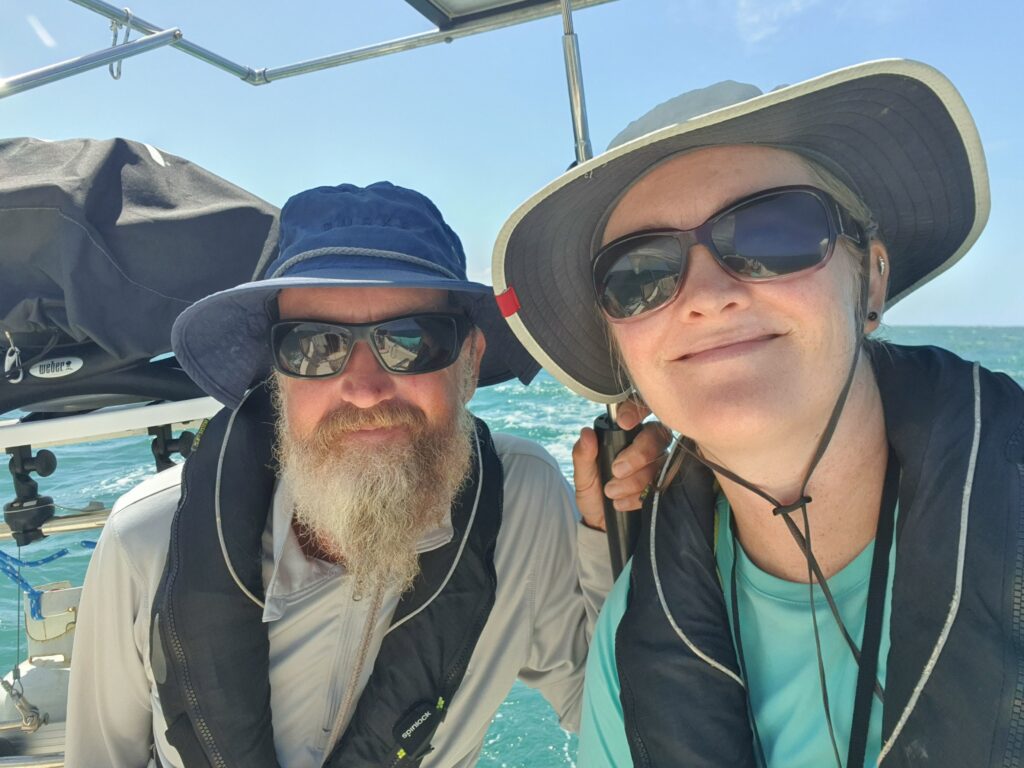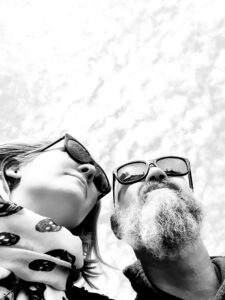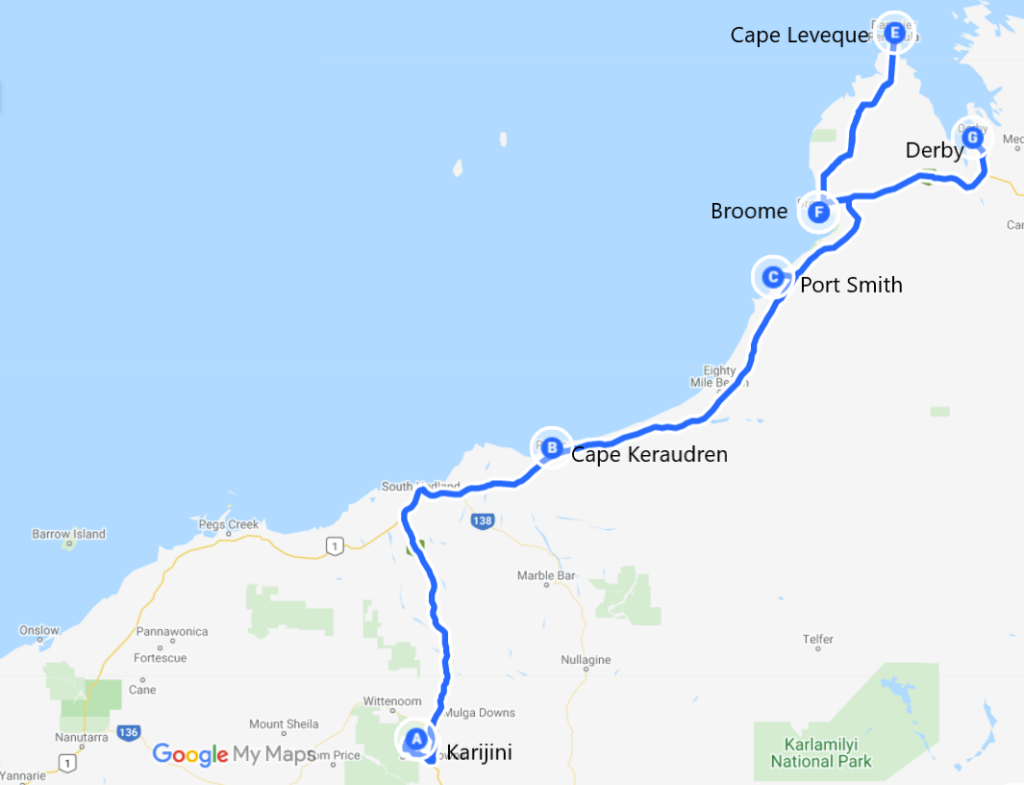
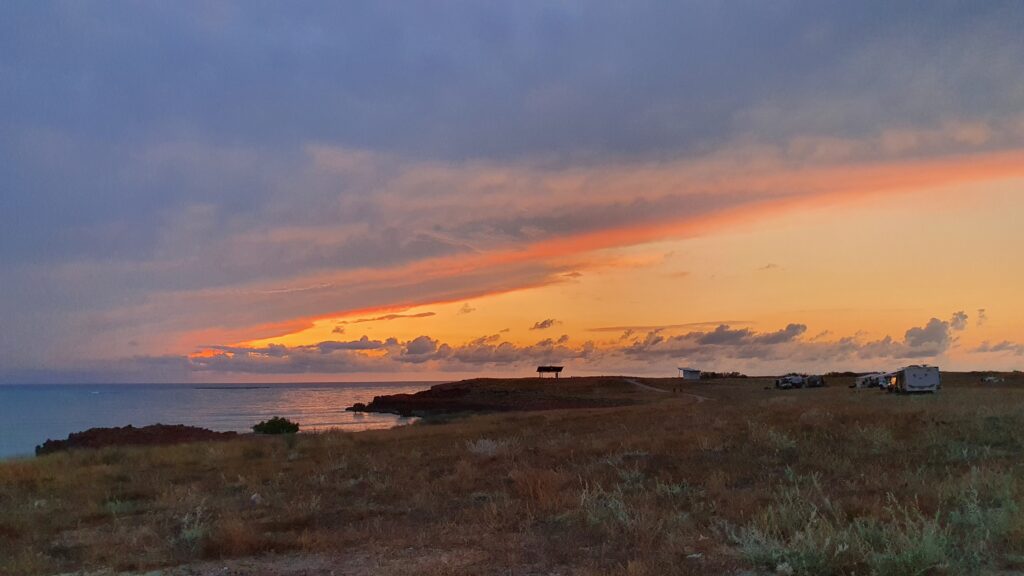
By Fi
We last left off exiting Karijini National Park due to the unfortunate rain. I was excited in a way as I seem to continue to gravitate towards the coast, and this is where we were headed again – to Broome via Eighty Mile Beach.
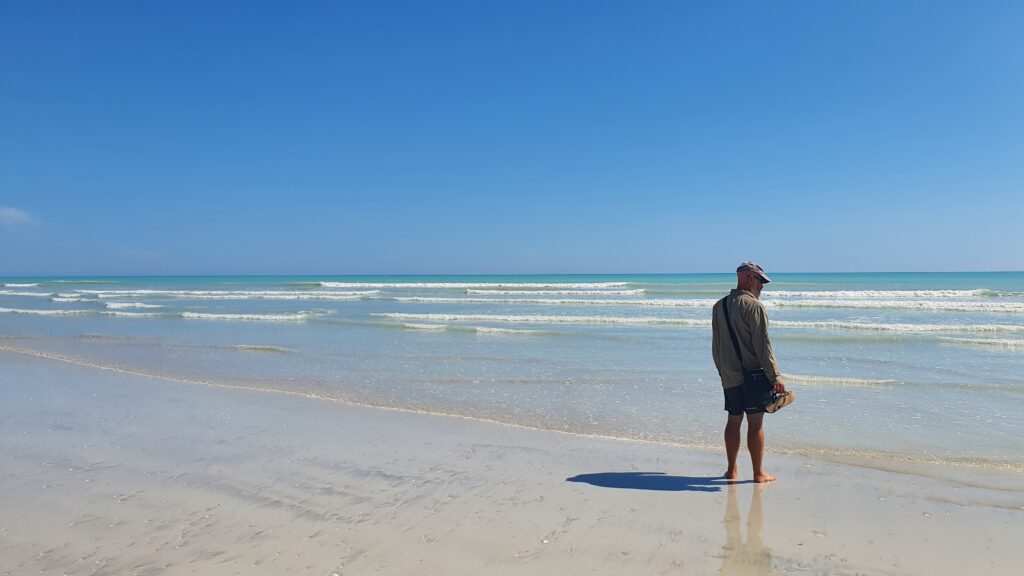
Our first stop would be on the beach. We found a conservation reserve called Cape Keraudren that had a campground perched on a cliff with stunning views of the coast. With mobile phone reception, we took some time out to catch up with family. Alas, we later paid dearly for this time on the phone, with hundreds of sandfly bites, so a quick walk the next morning was enough, and we headed off further up the beach. Here’s a shot of Adrian apparently pondering the salt water at Eighty Mile Beach.
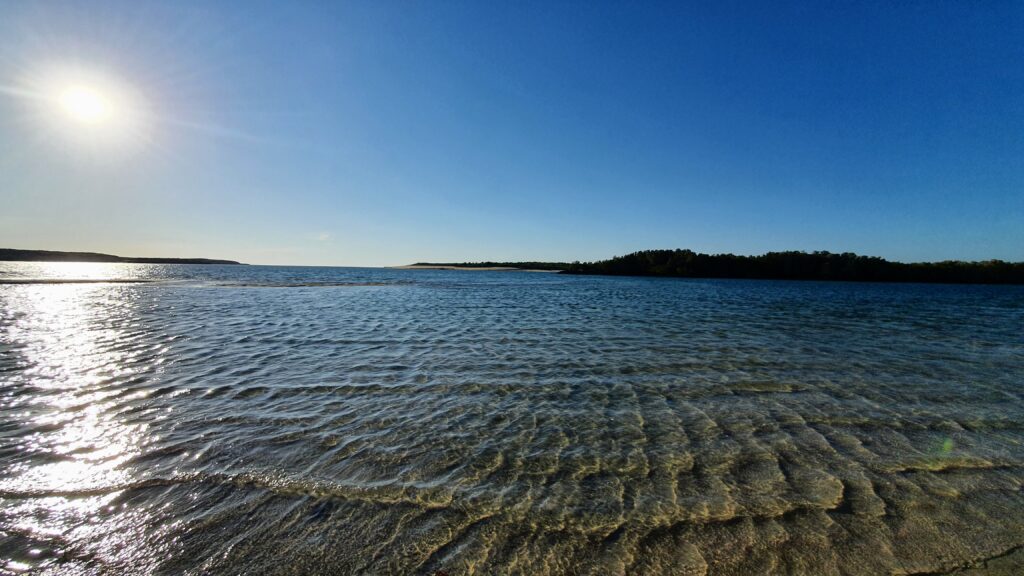
Our next camp we were hopeful would be sans sandflies. It was pretty good! Port Smith Caravan Park touted a picture perfect lagoon, and we wandered down the road for a quick dip. The people running the place assured us there were no problems with crocodiles, and in this case, and given the yummier people who had gone before, we had a lovely dip in the shallows.
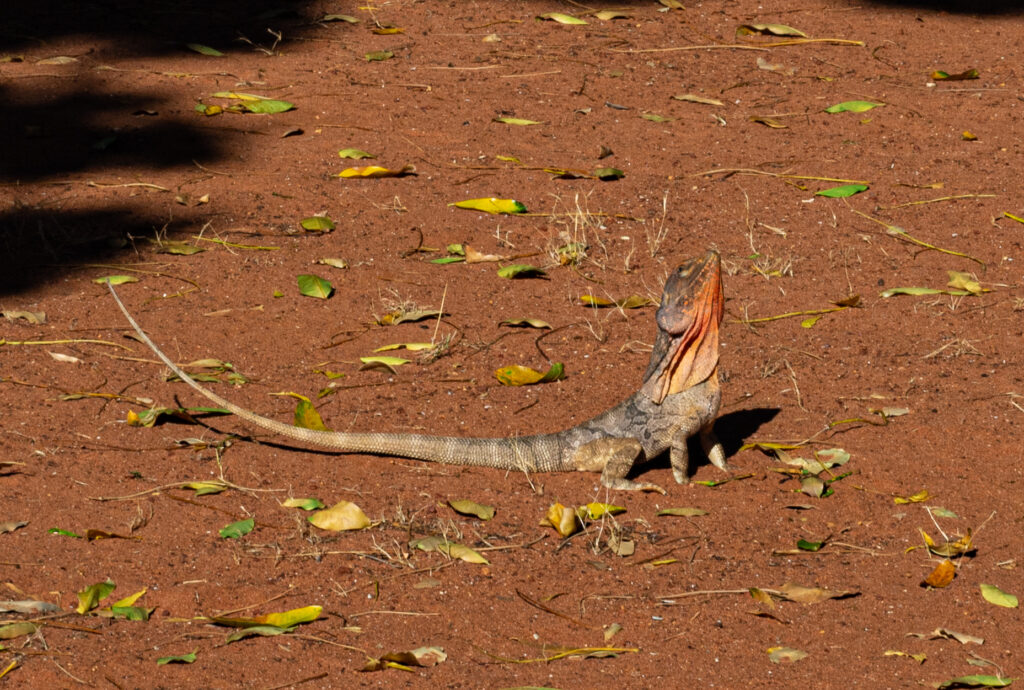
After our new mate the frill necked lizard had finished his breakfast of preying mantis the next day, we were off and headed to Broome. Broome was the place we were going to be able to stock up, get into the Apollo hire place for a few things we needed and hopefully enjoy cable beach. We sure did, we hired paddleboards and paddled out to sea, to play with the turtles off the beach.
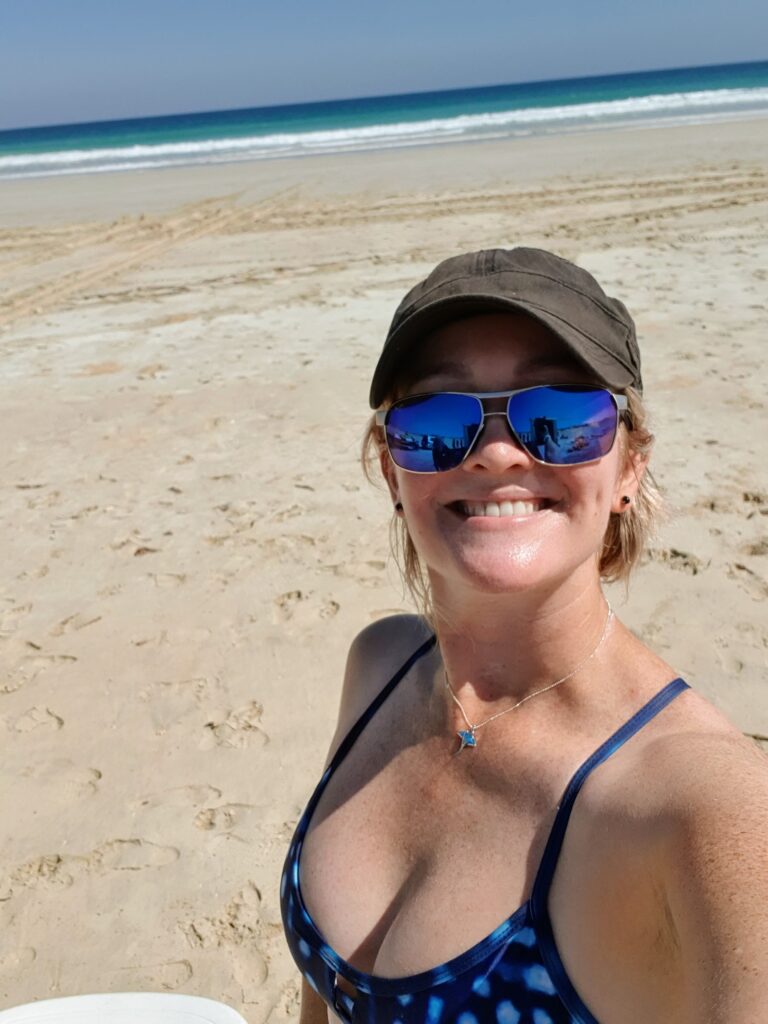
It was afterwards our new friend at the paddleboard hire place mentioned that next month the crocodiles would be out there cruising up the coast. Right, I guess again we picked the right time to be on the coast – the previous time it was accidentally picking the perfect time to swim with whale sharks and manta rays.
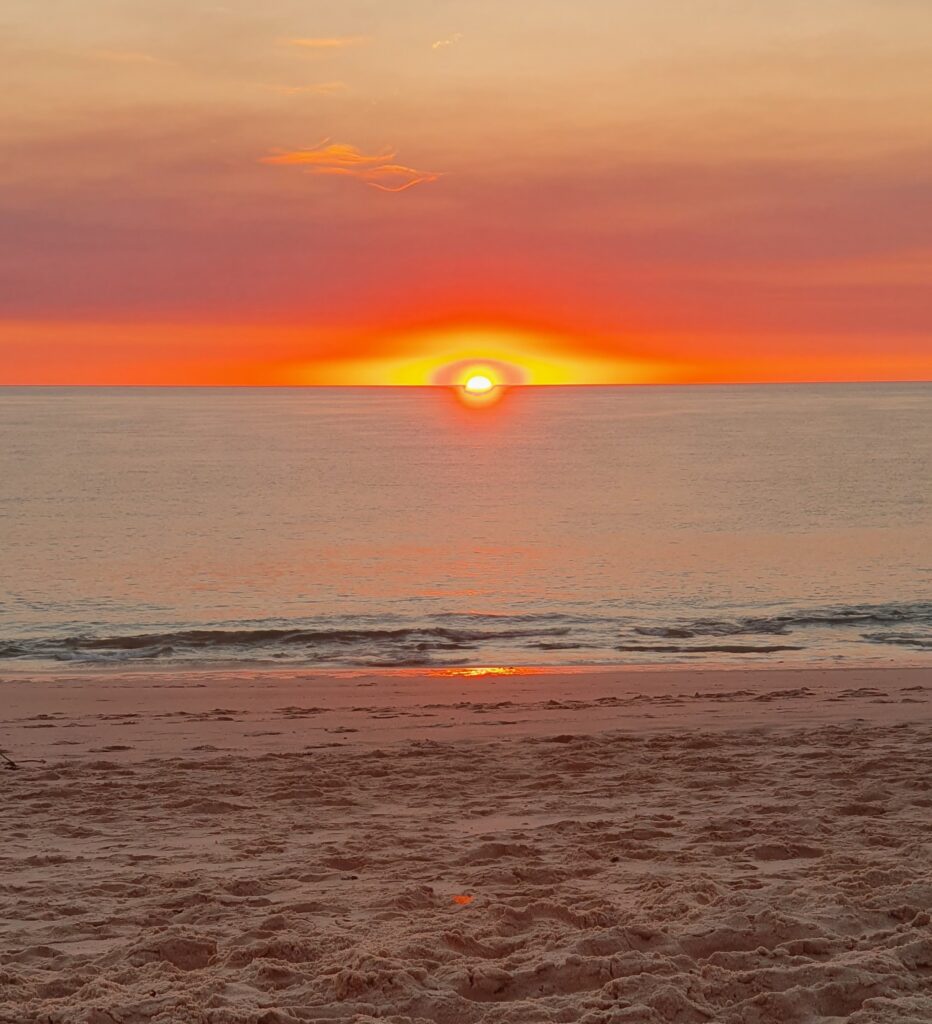
Broome was also our kick off point for a beautiful weekend at Cape Leveque. Cape Leveque is just north of Broome on the peninsular, and we had chosen a wilderness camp called Kooljaman on the western side of the cape with stunning views over the Indian Ocean and some of the most beautiful sunsets we’ve been lucky enough to have.
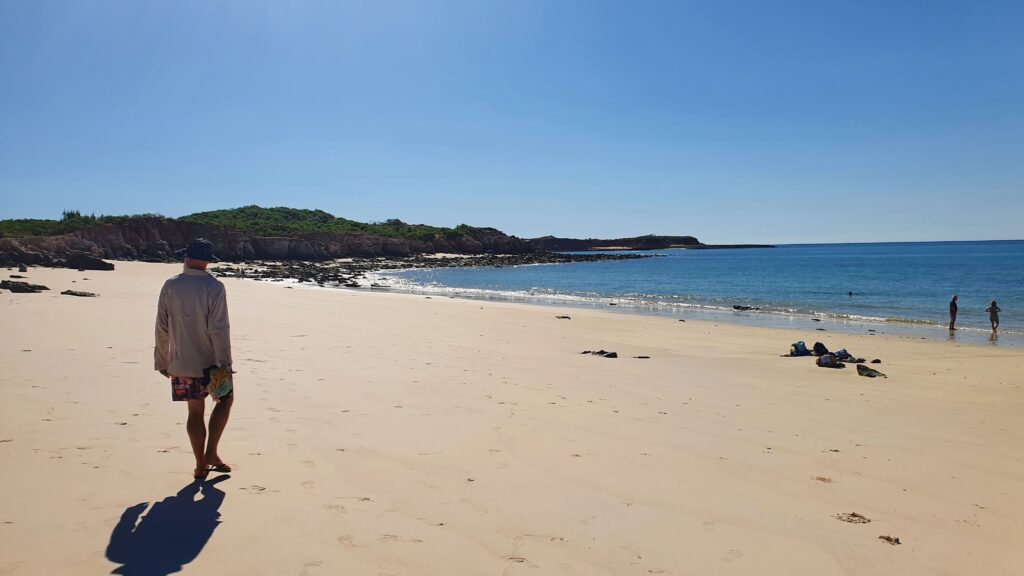
We were able to enjoy swimming in their lagoon in warm tropical water without too much fear of crocs or stingers, and we also took some time out to complete a bushtucker tour of the area. I think we ate enough vitamin C that morning to keep us going for a year! The views were spectacular from our campsite and the place was just stunning with its white beaches, red cliffs and blue water.
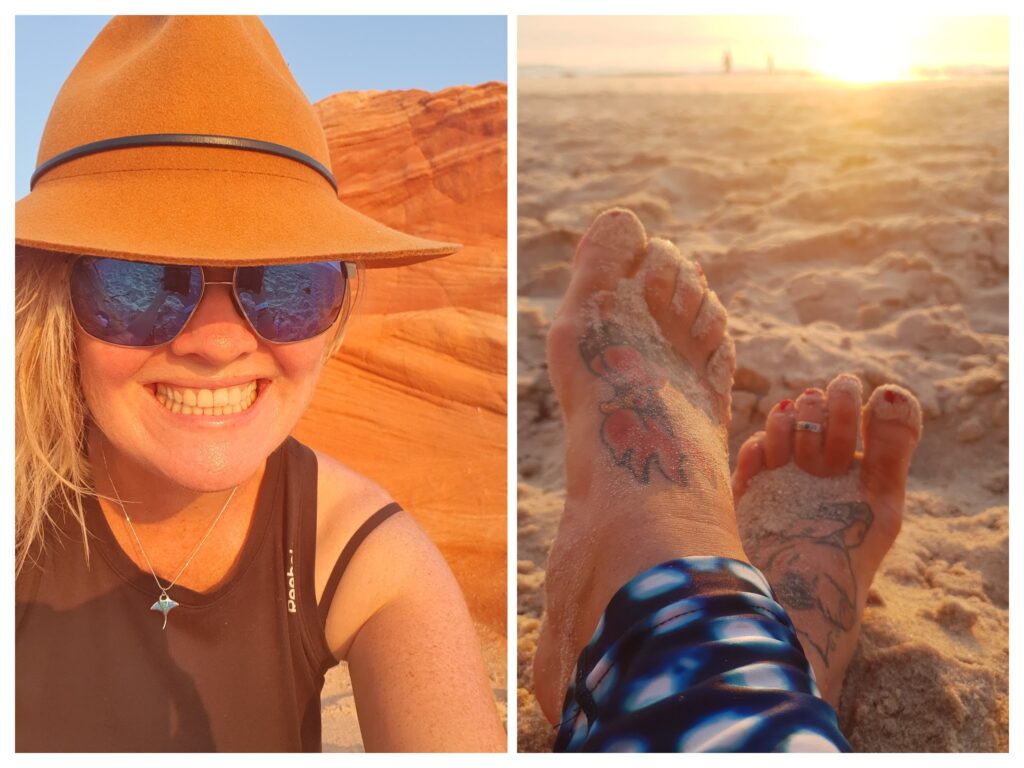
We didn’t want to leave, but we had a tour booked at Derby, which involved going back to Broome (for more swimming at Cable Beach naturally – apparently with no photos on that day), then on to Derby.
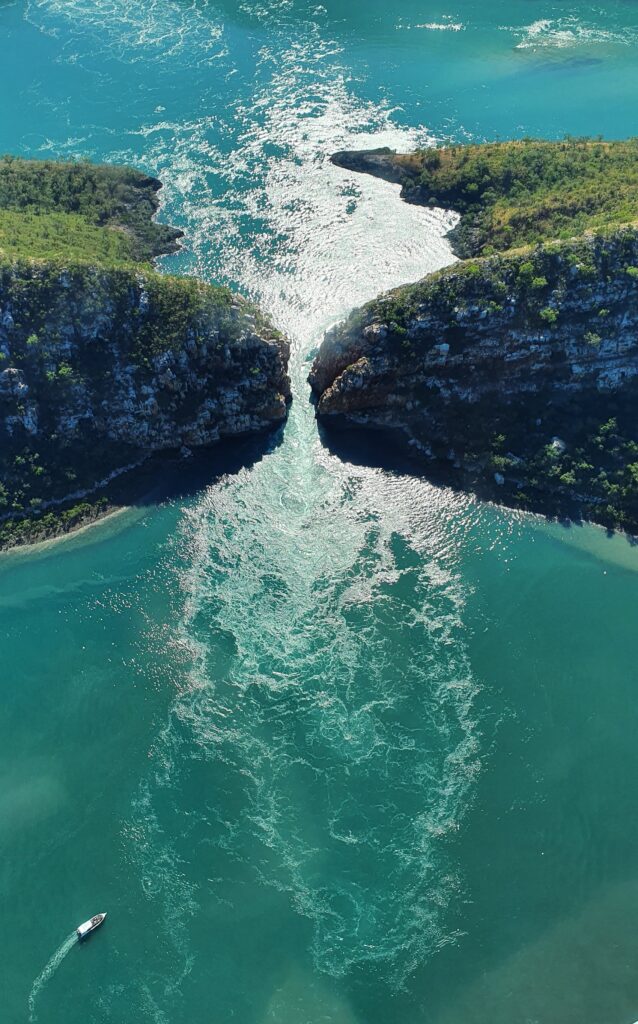
We were picked up at our caravan park early (8AM is early…) and ferried out to the airfield. I wasn’t sure what to expect, but our pilot gave us a quick run through of the day. He would fly us out to the horizontal falls base where we would be greeted by the staff there, then taken for our boat tour of the falls. He would then pick us up and fly us low over the coast depositing us back mid afternoon.
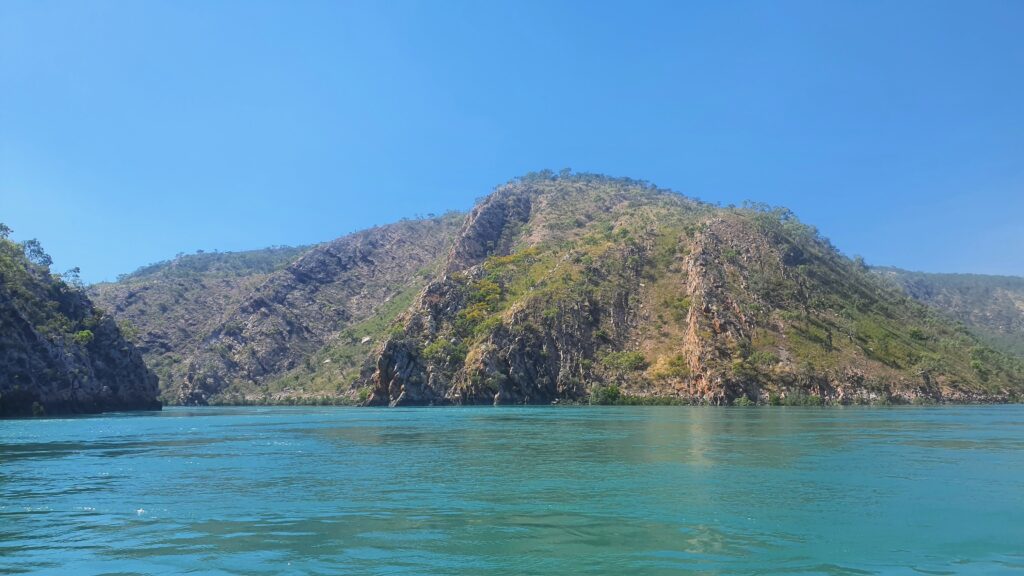
Sounds simple enough. We flew out out over Derby and north-ish to the falls. The falls came into sight briefly, before our water landing near the houseboats. It was a really great setup there, morning teas before being ferried onto the fast boat for a leisurely cruise down “Cyclone Creek” named aptly as it is used as a cyclone bolt hole for boats, particularly their houseboats in the offseason. The water was absolutely pumping into the creek, and our skipper switched off the engines and let us float a few hundred metres down the creek through the narrow S bends.
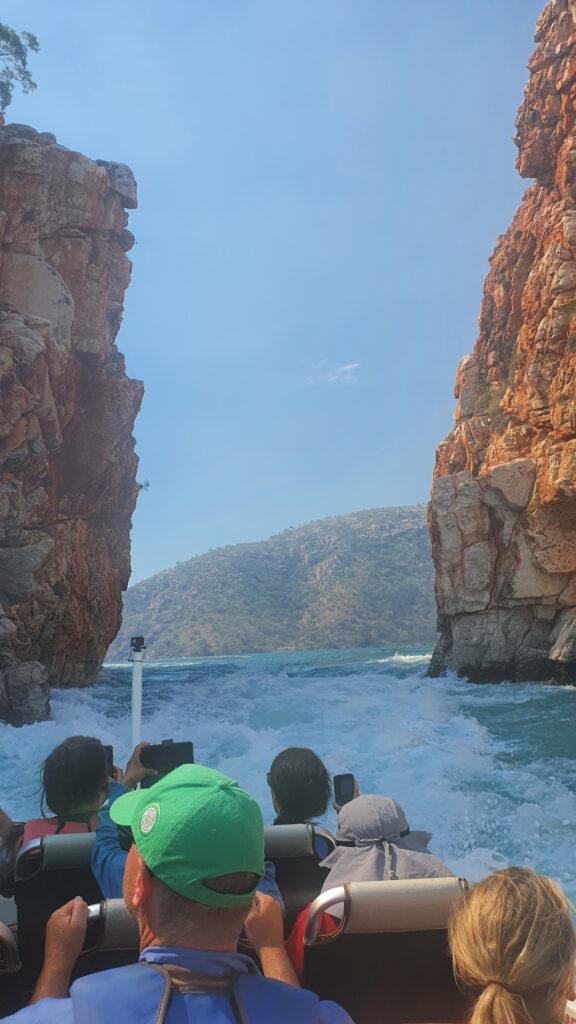
Later is was time to visit the “Horizontal Falls” named as they appear like waterfalls. The tide rips through the two small openings so hard, that at the smallest part, the difference in height between the water on either side can be up to 4 metres. At 1.5 metres difference, the boat can take us through on a fast ride and drop through the cliff faces – much like a rollercoaster – so that was fun!
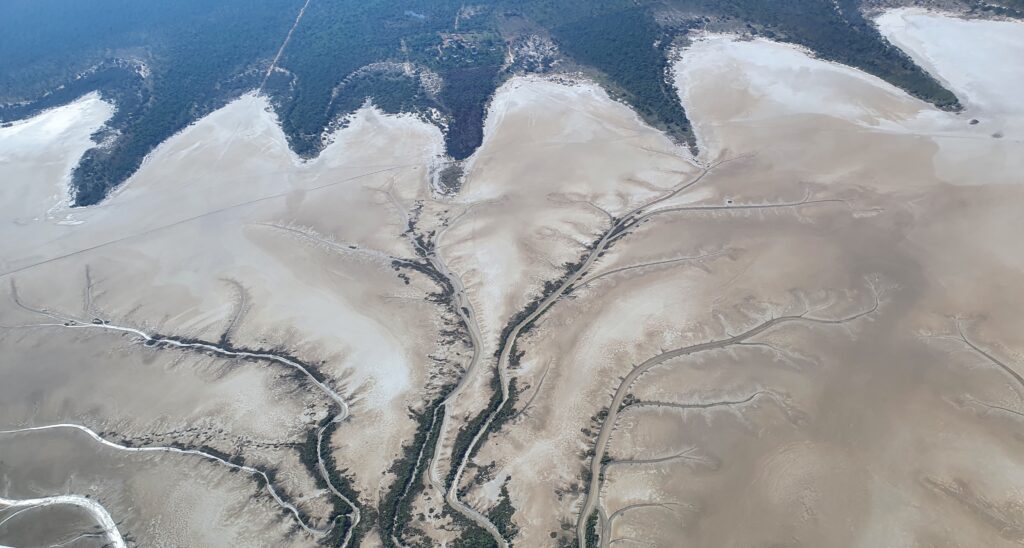
The scenery is special, and we were fed a beautiful barramundi lunch while appreciating this stunning area. Not content with just one trip through the falls, our skipper got us back on the boat for another fast ride through the second lot of falls, before we were put back on our plane for the 40 minute trip back into Derby. Pretty impressive operation there, we learned they have 32 flights in there a day, as well as overnight stays available, and to keep that many people going through the place, all fed and happy with their experience is pretty impressive.
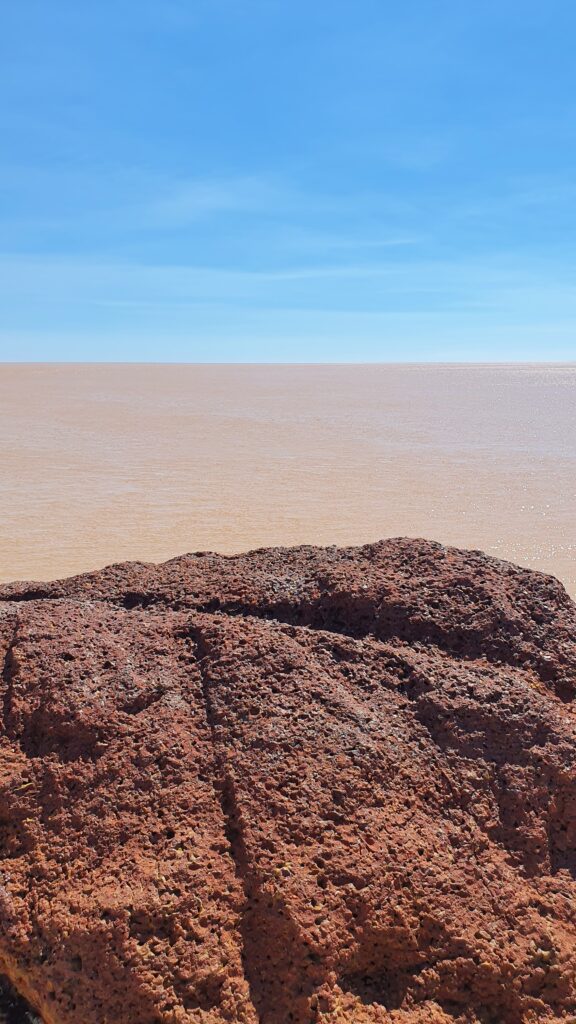
Adrian and I however, were happy to ferry ourselves the next day, out of Derby (via a quick stop to look at the mud) and back into the dirt – on to the Gibb River Road.
